Sony Cyber-shot DSC-HX50V Review
- Introduction
- Ease of Use
- Image Quality
- Sample Images
- Product Images
- Rating & Conclusion
- Main Rivals
- Review Roundup
- Specifications

Latest Reviews
The Sony Cyber-shot DSC-HX50V travel-zoom camera is the World's smallest and lightest camera with a 30x zoom lens. Offering a focal range of 24-720mm, 20.4 megapixel back-illuminated Exmor R CMOS sensor, wi-fi connectivity and built-in GPS tracking, the HX50V also has 50p Full HD video recording with stereo sound and HDMI output and 3D Sweep Panoramas and 3D Still Images. Other key features of the Sony HX50V include a 3 inch LCD screen with 921,000-dots, Multi Interface Shoe, Multi Terminal for using a remote controller, fast 0.1 second auto-focusing, 10fps burst shooting mode at full resolution, ISO range of 80-12800, Optical SteadyShot with Active Mode, full P/A/S/M manual controls, artistic Picture Effect modes, Intelligent Sweep Panoramas, and support for both Memory Stick PRO Duo and Secure Digital cards. The Sony Cyber-shot DSC-HX50V is available in black or silver for around £350 / $450.
Note that in the UK, the correct model name is Sony Cyber-shot DSC-HX50 and it doesn't include built-in GPS tracking.
The DSC-HX50V is Sony's latest travel-zoom camera, following 2012's HX20V and HX30V models. Travel-zooms now typically offer at least a 20x or even bigger lens in a compact body that you can still fit inside a pocket, but the Sony DSC-HX50V literally takes things even further with a 30x, 24-720mm extending optical lens with respectable enough maximum apertures of f/3.5 at the 24mm wide-angle setting and f/6.3 at the 720mm full telephoto setting.
The HX50V's lens is a real joy to use, with a 30x zoom in such a relatively small package making this camera incredibly adaptable, with everything from ultra-wide landscapes to candid long-distance portraits within easy reach. The 24mm focal length provides an entirely new wide angle of view that can only increase your creativity. You won't want to go back to a "standard" 35mm zoom after using the 25mm lens on the DSC-HX50V, or even a 28mm one - 4mm at the wide-angle end really does make a big difference.
When set to 720mm, the lens does admittedly extend quite a long way from the front of the HX50V, but for the most part it look to all intents and purposes like a "normal" compact camera. If that's not long enough for you, then the Clear Zoom function effectively digitally doubles the zoom range, using Sony's new Pixel Super Resolution Technology to increase the magnification. The combination of the f/3.5 aperture, effective optical image stabilizer and maximum ISO speed of 12800 makes this camera well suited to hand-held low-light photography, not to mention the wealth of dedicated shooting modes. Sony has fitted a dual image stabilisation mechanism in the shape of both optical SteadyShot and an ISO range that extends up to ISO 12800, much better than you'll find on your average point-and-shoot. Note that as with other recent Cyber-shots, you can't actually turn off the SteadyShot function, Sony assuming that its better turned on permanently.
Despite its massive zoom lens, the HX50V is still a fairly slender camera, measuring nearly 4cms at its narrowest point and weighing 272g with the battery and memory card fitted, with a large 3-inch, 921k-dot resolution LCD screen at the rear. As you'd expect with a screen of that size on such a small camera, the HX50V has no optical viewfinder to fall back on in brighter lighting conditions.
Providing the means of gripping the camera is a substantial textured, rubberised protrusion on the front and a small thumb-shaped lozenge on the rear, making the DSC-HX50V easy to get to grips with despite its mostly smooth recycled plastic surface. Also located on the front of the HX50V is the lens and a porthole on the left for the self-timer/AF illuminator. There's a pop-up flash unit on top of the camera which is automatically raised when you select a flash mode.
Press the small On/Off button on the top plate and the Sony Cyber-shot DSC-HX50V quickly readies itself for action in a just over a second. The adequately sized shutter-release button has a definite halfway point, very quickly determining focus and exposure with a bleep of affirmation even in low-light, focus points highlighted as green rectangles on the LCD. Go on to take the shot and the JPEG images are committed to memory in a single second, the screen momentarily blanking out and then displaying the captured image before the user can go on to take a second shot.
The shutter release button is encircled by a responsive forefinger-operated push/pull rocker zoom lever, with the camera taking around five seconds to zoom from wide-angle to full telephoto. The HX50V's twin built-in stereo microphones are also located on top of the camera, either side of the new Multi Interface Shoe. Sheltered underneath the housing at the front of the hot-shoe we find a number of connector pins that allow users to mount a range of proprietary Sony accessories, which is why the company calls this accessory port a 'Multi Interface Shoe.' It can be used for attaching one of a range of accessories, including a more powerful flash, an electronic viewfinder (FDA-EV1MK), and even an optical viewfinder (FDA-V1K).
Sony have usefully added an Exposure Compensation dial to the top of the HX50V, which makes it very easy to quickly change this key setting. It has a positive clicking action and stays in place even when stored in a pocket or bag. A round shooting mode dial with a knurled edge and positive action is also found on the HX50V's top-plate, letting you quickly switch between the various shooting modes that are on offer. Sony has included Intelligent Auto scene recognition, which works in virtually identical fashion to the intelligent auto modes of Panasonic's and Canon's compact ranges. Simply point the HX50V at a scene or subject and the camera analyses it and automatically chooses one of 11 pre-optimised settings to best suit. There's also the Superior Auto mode, which places greater emphasis on reducing blur and noise and increasing the dynamic range.
Adding to the HX50V's snapshot simplicity, these features accompany face recognition and smile shutter functionality on board, the former mode biasing human faces in the frame and the latter mode firing the shutter when it detects a smiling subject. The Face Detection system automatically adjusts the focus, exposure and white balance for people in the frame, and can even be set to distinguish between children and adults. Smile Detection offers three self-explanatory options, Big, Normal and Slight. Used in conjunction, the Face and Smile Detection systems do result in more hits than misses, especially in contrasty lighting conditions, although all those smiling faces could ultimately freak you out a little! The self-portrait options in the self-timer menu work by automatically taking the shot with a two second delay after either one or two people have entered the frame.
In addition to the regular Program mode, which provides the full range of camera options and additionally allows you to change settings like the ISO speed and metering, is the welcome inclusion of Aperture-priority, Shutter-priority and Manual modes, which will instantly appeal to the more experienced photographer. The ability to choose from 30 - 1/1600th second shutter speeds and set both the aperture and shutter speed if you wish opens up a lot of creative potential. Sadly there's no support for the RAW file format, which would really have been the icing on the cake for serious photographers looking for a backup pocket camera to their DSLR.
The Intelligent Sweep Panorama mode lets you capture a panoramic image very easily without the use of a tripod. All you need to decide is whether you would like to start from left or right, top or bottom. Then press and hold down the shutter release while doing a "sweep" with the camera in hand. Exposure compensation is available before you start the sweep, but the exposure is fixed once you depress the shutter button. After you are done with the sweeping, the camera does all the processing required, and presents you with a finished panoramic image. There are three modes, Standard, Wide and High Resolution, with the latter mode successfully stitching together a 42.9 megapixel image - not bad for a humble compact! Note that if you do the sweeping too slowly, or you let go of the shutter release button too early, the panorama will be truncated.
For those who like a healthy dose of gimmickry with their gadgets, the HX50V offers a 3D still image mode - an addition to the now expected 3D Sweep Panorama mode and the 'cheat' of the lenticular print-like Sweep Multi Angle mode, also again featured here. This option doesn't require two lenses and two sensors to produce a stereoscopic image. Instead the Sony takes two consecutive shots from two different vantage positions and combines them for its 3D effect. Like all of its stereoscopic rivals you'll still need a 3D equipped TV to properly view the results.
In the Hand-held Twilight and Anti Motion Blur shooting modes, the DSC-HX50V takes six shots in a rapid sequence, typically at a high sensitivity setting and a (relatively) fast shutter speed, and then combines them into a single image that has somewhat less noise than a single shot taken at the same ISO and exposure settings. In our experience, the difference between the two modes is that in Anti Motion Blur mode, the camera is more willing to pick a really high ISO setting like ISO 1600 to maintain a fast shutter speed, whereas in Hand-held Twilight mode, it will only go as high as absolutely necessary to avoid camera shake at the chosen focal length. If light levels are truly low, however, the HX50V will pick a high ISO speed even in this mode.
Backlight Correction HDR is a feature where the HX50V automatically shoots two frames quick succession, varying the exposure for each one then combining them to create a single image with the most detail possible in both the shadows and highlights. You can see from the example on the Image Quality page that this feature produces a photo with noticeably more dynamic range than one taken using one of the standard shooting modes, but at the same time without replicating the often "false" look of many HDR programs. Note that you should mount the camera on a tripod to avoid any unwanted camera-shake, and we were disappointed that you can only turn Backlight Correction HDR on or off, with no options for varying the intensity of the effect. Background Defocus attempts to mimic the sharp subject and out-of-focus background effect that DSLR owners typically enjoy, again shooting two frames in quick succession but this time varying the aperture.
Present and correct is the increasingly ubiquitous ability to shoot High Definition video clips, but unlike its main competitors the HX50V does so at full 1080p HD rather than 1080i or 720p, and also with stereo sound rather than mono. The various options are 1920x1280 pixels at 50p or 50i and 1440x1280 at 50i in the AVCHD format, and 1440x1280, 1280x720 or 640x480 pixels at 25fps in the MPEG4 format. During video recording you can take a 15 megapixel still image by pressing the shutter button, or alternatively grab a still from your video footage during playback.
There is full use of the 30x optical zoom during recording so you can really make the most of that massive focal range, plus the ability to change the EV level, white balance, and metering options and turn on either standard SteadyShot or the Active Mode mode, which provides up to 10x more effectiveness with no side-effects. There's also a direct HDMI output from the camera, useful for playing back your footage on a HDTV set, although sadly there's no HDMI cable supplied in the box. The dedicated Movie button on the rear of the DSC-HX50V allows you to start recording a movie with a single push of a button, and then stop recording by pressing the same button. You can also activate the movie mode with adjustable settings via the Shooting Mode dial.
GPS is a feature that has slowly but surely been finding its way into digital cameras as the technology has got smaller and cheaper to implement. This potentially allows you to seamlessly geo-tag your photos (latitude and longitude co-ordinates are stored in the EXIF data) and then sort and display them using geo-friendly websites such as Google Earth and Google Maps or the supplied Picture Motion Browser PC software. The HX50V also uses the GPS to keep the camera time accurate, and can plot your progress using the new GPS Log Recording function even if the camera is turned off.
The GPS function can be manually turned on or off and the current GPS status is displayed as a small icon on the LCD screen. Three bars appear next to the icon when the GPS has synced with one or more satellites, which unfortunately takes a few minutes from powering on the camera. Thankfully once it's synced, the HX50V's GPS receiver works a lot better than most other GPS-capable cameras that we've reviewed, saving accurate positioning information for the majority of the images that we shot in built-up central London, making this camera much more useful for urban photographers. The main downside of the HX50V's GPS is the subsequent drain on battery life, with the camera only managing just over 300 shots with GPS turned on instead of the 400 that it can manage without.
The HX50V also offers built-in wi-fi connectivity. You can wirelessly transfer your photos to a smartphone or tablet that's running the free PlayMemories Mobile app, or directly to a networked PC for easier backup. You can also view on a DLNA-compatible TV via a wireless router, or send them straight from the camera a TV that supports Wi-Fi Direct. Finally, you can take control of the camera using your smartphone (fire the shutter, set the self-timer and operate the zoom), handy for including yourself in the frame or even more remote shooting.
The rear of the DSC-HX50V is dominated by the large 3 inch LCD screen, with the resolution a satisfyingly high-res 912k dots. To the right of the screen is the useful one-touch movie record button and a small button for playing back your images. Users have the ability to dip in and out of created folders of images or the calendar view, view thumbnails, select slideshows and choose transitional effects and accompanying music, or delete shots. Press the shutter button halfway and you're helpfully catapulted back into capture mode. And that's basically it. With a press of the Menu button in playback, users have access to a few in-camera retouching effects, including the ability to crop and sharpen an image and apply red-eye correction.
Also on the rear is the Custom button, which as the name suggests can be customised to access one commonly used setting, such as ISO speed or Exposure Compensation. Underneath the Playback button is a traditional round navigation pad which you can use to navigate through menus and options, in conjunction with the small button in the middle which activates whatever it is you've chosen. The four directions on the navigation pad also provide a quick way of setting the Display, Flash, the Photo Creativity interface and Continuous Shooting/Timer options. The Photo Creativity makes it easier for beginners to change the colour, brightness, vividness and Picture effect modes, with changes previewed in real time on the LCD screen.
Finally, there are buttons for the camera's menu system and for deleting images underneath the navigation pad. The menu button accesses most of the camera's main functions - image size, burst settings, bracketing, exposure compensation, ISO, white balance, focus mode, metering, smile detection, and face detection - plus an icon at the bottom to open the four Settings menus. The latter includes the ability to deactivate the camera's 'bleep' that otherwise sounds at every button press, choose the movie format and activate red-eye reduction if required.
The navigation pad also doubles up as a control ring that's used to set the aperture and shutter speed in the creative shooting modes, amongst other things. The ring is a little small and over-sensitive, and having to press the tiny central button to toggle between the ISO speed, shutter speed and aperture quickly becomes a bit tiresome, but the ability to take full control of the HX50V is still very welcome.
Pressing the drive mode button brings up two options, single or burst, with high-, mid- and low-speed continuous options then available in the Menu system. Out of these, the high-speed continuous mode is the most remarkable. The HX50V takes up to 10 full-resolution photos at a frankly astounding 10 frames per second, which is faster than most compact cameras and indeed most DSLRs too. The only fly in the ointment is that once the burst is completed, it takes over fifteen seconds for the camera to clear the buffer, during which you cannot take another picture. In the other two continuous shooting modes, the Sony HX50V also takes up to 10 pictures, but at slower speeds of 5 or 2 frames per second.
The bottom of the Sony HX50V features a standard metal screw thread for attaching it to a tripod which is conveniently located in the centre. A plastic cover protects the lithium-ion battery and the removable memory card, with the HX50V supporting the SD / SDHC / SDXC format in addition to Sony's own proprietary Pro Duo Memory Stick format. There's also a hardly worth it 11MB internal memory to fall back on which can store 7 full-resolution still images. Completing the bottom of the HX50V is an unprotected the HDMI port. The right side of the HX50V has a small metal eyelet for the supplied wrist strap and also the new Multi Terminal port for using a remote controller underneath a sturdy plastic cover, while there are no controls on the left side except for a hole for the built-in microphone (looking from the rear).
All of the sample images in this review were taken using the 20 megapixel JPEG setting, which gives an average image size of around 6Mb.
The Sony Cyber-shot DSC-HX50V produced images of good quality during the review period. This camera handled noise pretty well, not becoming too obvious until ISO 800, and then becoming progressively worse at the faster settings of ISO 1600 and 3200, a good performance for such a small image sensor with such a high pixel count. It's not really worth using the fastest 6400 and 12800 speeds though.
Chromatic aberrations were in evidence but were well-controlled, with some limited purple fringing effects appearing in high contrast situations. The 20 megapixel images were a little soft straight out of the camera at the default sharpen setting and require some further sharpening in an application like Adobe Photoshop, or you can increase the in-camera sharpening level.
Macro performance is outstanding, allowing you to focus as close as 1cm away from the subject. Commendably barrel distortion is well controlled even at the 25mm wide-angle focal length of the versatile 20x zoom lens. The built-in flash worked well indoors, with no red-eye and adequate overall exposure. The maximum shutter speed of 30 seconds allows the cameras to capture enough light for most after-dark situations.
The Backlight Correction HDR feature dramatically increases the detail in the shadow and highlight areas, although we miss being able to choose just how much correction is applied. There's a good range of Color Modes and Picture Effects on offer, while the Sweep Panorama mode makes it simple to take wide-vista shots.
There are 9 ISO settings available on the Sony Cyber-shot DSC-HX50V. Here are some 100% crops which show the noise levels for each ISO setting.
Focal Range
The Sony Cyber-shot DSC-HX50V's 30x zoom lens offers a very versatile focal range, as illustrated by these examples:
Here are two 100% crops which have been Saved as Web - Quality 50 in Photoshop. The right-hand image has had some sharpening applied in Photoshop. The out-of-the camera images are just a little soft and ideally benefit from some further sharpening in a program like Adobe Photoshop. Alternatively you can change the in-camera sharpening level.
Chromatic Aberrations
The Sony Cyber-shot DSC-HX50V handled chromatic aberrations well during the review, with some purple fringing present around the edges of objects in high-contrast situations, as shown in the examples below.
The Sony Cyber-shot DSC-HX50V allows you to focus on a subject that is 5cms away from the camera when the lens is set to wide-angle. The first image shows how close you can get to the subject (in this case a compact flash card). The second image is a 100% crop.
The flash settings on the Sony Cyber-shot DSC-HX50V are Auto, Forced Flash, Slow Syncro, No Flash, with a Red-eye Reduction option in the Main menu. These shots of a white coloured wall were taken at a distance of 1.5m.
And here are some portrait shots. As you can see, neither the Forced Flash setting or the Red-Eye Correction option caused any amount of red-eye.
The Sony Cyber-shot DSC-HX50V's maximum shutter speed is 30 seconds in the Manual mode, which is great news if you're seriously interested in night photography. The shot below was taken using a shutter speed of 15 seconds at ISO 80.
Background Defocus
Background Defocus attempts to mimic the sharp subject and out-of-focus background effect that DSLR owners typically enjoy, shooting two frames in quick succession and varying the aperture between each one.
Backlight Correction HDR
DRO is Sony's solution for improving shadow and highlight detail in photos taken in contrasty light, significantly increasing the image's dynamic range. The examples show the effect of turning this feature on.
Color Modes
There are 5 Color Mode preset effects that you can use to change the look of your images.
Picture Effects
The Sony Cyber-shot DSC-HX50V offers a range of 9 creative Picture Effects.
Intelligent Sweep Panorama
The Sony Cyber-shot DSC-HX50V allows you to take panoramic images very easily, by 'sweeping' with the camera while keeping the shutter release depressed. The camera does all the processing and stitching and even successfully compensates for moving subjects, with the High Resolution mode successfully creating a 40+ megapixel image.
This is a selection of sample images from the Sony Cyber-shot DSC-HX50V camera, which were all taken using the 20 megapixel Fine JPEG setting. The thumbnails below link to the full-sized versions, which have not been altered in any way.
1/15s · f/3.5 · ISO 80 4.3mm Download Original
1/20s · f/3.5 · ISO 100 4.3mm Download Original
1/40s · f/3.5 · ISO 200 4.3mm Download Original
1/80s · f/3.5 · ISO 400 4.3mm Download Original
1/160s · f/3.5 · ISO 800 4.3mm Download Original
1/320s · f/3.5 · ISO 1600 4.3mm Download Original
1/640s · f/3.5 · ISO 3200 4.3mm Download Original
1/1250s · f/3.5 · ISO 6400 4.3mm Download Original
1/1600s · f/3.5 · ISO 12800 4.3mm Download Original
1/250s · f/6.3 · ISO 400 109.32mm Download Original
1/250s · f/6.3 · ISO 400 128.07mm Download Original
1/250s · f/6.3 · ISO 800 102.29mm Download Original
1/400s · f/3.5 · ISO 80 4.3mm Download Original
1/320s · f/5.6 · ISO 80 14.94mm Download Original
1/400s · f/4 · ISO 80 5.34mm Download Original
1/50s · f/3.5 · ISO 80 4.3mm Download Original
1/60s · f/3.5 · ISO 80 4.3mm Download Original
15/1s · f/3.5 · ISO 80 4.3mm Download Original
1/30s · f/3.5 · ISO 100 4.3mm Download Original
1/50s · f/6.3 · ISO 800 44.77mm Download Original
1/250s · f/5.6 · ISO 80 15.41mm Download Original
1/30s · f/5.6 · ISO 100 4.3mm Download Original
1/40s · f/3.5 · ISO 80 4.3mm Download Original
1/30s · f/3.5 · ISO 500 4.3mm Download Original
1/30s · f/3.5 · ISO 200 4.3mm Download Original
1/250s · f/5.6 · ISO 80 4.3mm Download Original
1/100s · f/8 · ISO 80 14.94mm Download Original
1/60s · f/8 · ISO 160 9.75mm Download Original
1/500s · f/6.3 · ISO 80 59.33mm Download Original
1/250s · f/6.3 · ISO 80 129mm Download Original
1/250s · f/6.3 · ISO 160 129mm Download Original
1/160s · f/6.3 · ISO 160 22.91mm Download Original
1/250s · f/6.3 · ISO 160 66.03mm Download Original
1/80s · f/3.5 · ISO 80 4.3mm Download Original
1/500s · f/3.5 · ISO 80 4.3mm Download Original
1/1250s · f/3.5 · ISO 80 4.3mm Download Original
1/80s · f/8 · ISO 80 4.3mm Download Original
1/160s · f/8 · ISO 100 23.67mm Download Original
1/40s · f/8 · ISO 80 4.3mm Download Original
1/250s · f/3.5 · ISO 80 4.3mm Download Original
1/800s · f/3.5 · ISO 6400 4.3mm Download Original
1/320s · f/3.5 · ISO 3200 4.3mm Download Original
1/200s · f/6.3 · ISO 250 33.46mm Download Original
1/160s · f/5.6 · ISO 80 16.98mm Download Original
1/320s · f/6.3 · ISO 80 44.77mm Download Original
1/250s · f/6.3 · ISO 80 82.4mm Download Original
1/1250s · f/4.5 · ISO 80 7.08mm Download Original
1/250s · f/6.3 · ISO 200 84.81mm Download Original
Sample Movie & Video
This is a sample video from the Sony Cyber-shot DSC-HX50V camera at the highest quality setting of 1920x1080 pixels at 50 frames per second. Please note that this 22 second movie is 68.5Mb in size.
The Sony Cyber-shot DSC-HX50V offers the longest focal length of any travel-zoom camera on the market, with the 30x optic providing enough width and reach for virtually any photographic situation that you'll encounter. It does make the camera significantly bulkier and a little heavier than last year's HX30V/HX20V models, but can still be (just) squeezed into a trouser pocket. The addition of wi-fi connectivity along with GPS tracking (although not in the UK), full PASM manual shooting modes, plus the new multi-interface shoe and EV dial, make this the best-specified Sony travel-zoom yet, although the image quality from the new 20 megapixel sensor isn't quite as good as last year's models, we'd have liked a touchscreen interface, there's still no RAW shooting and the wi-fi options are rather limited and not particularly easy to use. The move to a 20 megapixel sensor, while looking good on paper, has resulted in slightly poorer image quality than the previous models offered, and the GPS functionality has inexplicably disappeared entirely from the UK model, making it less attractive. The 20 megapixel backlit sensor provides excellent results from ISO 100-400, but noise is already starting to appear at ISO 800 and the faster settings of 1600 and 3200 suffer from more noise and smearing of fine detail. You should ignore 6400 and 12800 completely unless there's really no alternative. So while the Sony Cyber-shot DSC-HX50V's bigger zoom, built-in wi-fi and better controls represent a significant step forward, the image quality and wi-fi implementation leave something to be desired, with potential UK owners having to completely miss out on GPS.
Listed below are some of the rivals of the Sony Cyber-shot DSC-HX50V .
Canon Powershot SX280 HS
The Canon PowerShot SX280 HS is a new travel-zoom camera for 2013, offering a 20x zoom lens and a 12 megapixel back-illuminated image sensor. Other key features of the Canon SX280 include built-in GPS and wi-fi connectivity, a 3 inch LCD screen, full 1080p HD movies with stereo sound, fast 14fps burst shooting, and a full range of manual and automated exposure modes. Read our in-depth Canon PowerShot SX280 HS in-depth review now...
Fujifilm Finepix F800EXR
The FinePix F800EXR is the latest travel-zoom camera from Fujifilm, sporting a 20x lens with a versatile focal range of 25-500mm. The 16 megapixel F800 EXR also features wireless image transfer, GPS support, full 1080p movies, a high-contrast 3 inch LCD screen and 8fps continuous shooting. Read our in-depth Fujifilm FinePix F800 EXR review to find out if it's the ultimate travel camera...
Nikon Coolpix S9400
The Nikon Coolpix S9400 is a stylish and affordable travel-zoom compact camera. Featuring an 18x zoom lens with a focal range of 25-450mm, the Coolpix S9400 has a 18 megapixel back-illuminated CMOS sensor, high-resolution 3-inch OLED screen and can shoot 1080p Full HD movies. Read our expert Nikon Coolpix S9400 review...
Olympus VH-410
The Olympus VH-410 is an affordable compact camera with a lot of premium features. You get a very capable camera for just £120 - 16 megapixels, 5x wide-angle zoom, 3 inch LCD touchscreen, 720p movies, all housed in a metal body. Read our Olympus VH-410 review to find out if it's a bargain or not...
Panasonic Lumix DMC-TZ40
The Lumix DMC-TZ40 is Panasonic's new flagship travel-zoom compact camera for 2013. The TZ40 (also known as the ZS30) packs an 18 megapixel sensor, 20x wide-angle zoom lens, 3 inch LCD touchscreen, 1080p HD movies, 10fps burst shooting, built-in wi-fi and GPS connectivity and full manual controls into its pocketable body. Read our Panasonic DMC-TZ40 / ZS30 review to find out if its the best travel-zoom camera...
Pentax Optio VS20
The Pentax VS20 is an innovative travel-zoom compact camera featuring a 20x image-stabilized zoom lens, 16 megapixel sensor, 3-inch LCD screen, 720p HD movies and not one but two shutter release buttons. Retailing for around £200 / $250, read our Pentax VS20 review to find out if it can take on its many travelzoom rivals...
Samsung WB850F
The Samsung WB850 is a new travel-zoom camera with a mouth-watering specification. The WB850 offers a wide-angle 21x zoom lens, 16.2 megapixels, Full 1080p video recording, 3 inch AMOLED screen, built-in wi-fi and GPS, plus full manual controls. Read our detailed Samsung WB850 review to find out if it's a contender for the travel zoom crown.
Reviews of the Sony Cyber-shot DSC-HX50V from around the web.
ephotozine.com »
The Sony Cybershot DSC-HX50 is a new travel zoom camera, it is the World's first pocket zoom with 30x optical zoom lens, and it has a 20 megapixel sensor. It also offers a flash hot-shoe (Ni) accessory port, manual controls and exposure compensation dial. You can buy the HX50 for around £350.00. Read the full review »
stuff.tv »
Sony's DSC-HX50 is the camera we're currently recommending to anyone that asks us which compact camera they should buy. Sure, that conversation often gets deeper and we might end up conlcuding that something smaller, something cheaper, or something more SLR-shaped is more suitable, but if you want our default response, this is it. Read the full review »
Image Sensory
Auto focus system, built-in-flash, lcd/ viewfinder, playback/ edit, power/ others, disclaimers, your comments.
Loading comments…
Home · Cameras · Lenses · Accessories · Software · Printers · Best · Compared · News
Search · Advertise · About · Privacy · Contact Us
© Copyright 2003-2023 Photo 360 Ltd.
The best travel camera in 2024: compact and portable cameras to take anywhere
The best travel cameras are small, lightweight, easy to use and offer a range of features – here are the ones to look at
- The Quick List ↩
Best overall
- Best full frame
- Best budget
- Best hybrid
- Best for size
- Best waterproof
- Best action cam
- Best for 360º
- Best for vloggers
- How to choose
- How we test
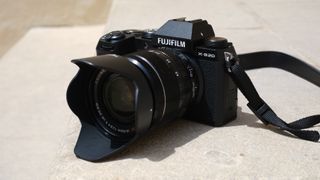
The Quick List ↩ 1. Best overall 2. Best full frame 3. Best budget 4. Best hybrid 5. Best for size 6. Best waterproof 7. Best action cam 8. Best for 360º 9. Best for vloggers How to choose How we test
The best travel cameras have to do one crucial thing: be better than your phone. That means the best travel cameras need to combine compactness with image quality, advanced features with simple operation, and ideally the ability to share your holiday photos and vacation videos fast.
Even though the best camera phones can produce great images, you just don't get the same quality as you would if shooting with one of the best point-and-shoots or best mirrorless cameras . Smartphones are restricted by smaller sensors offering lower still and video quality, reduced low light performance, and minimal control over depth of field (for those blurry backgrounds).
We'll look at mirrorless cameras that offer better image quality and more versatility than compact systems but at the cost of increased size and weight. Compact cameras, perfect for keeping on you at all times, won't weigh you down, and are really simple to use – although they have smaller sensors and fixed lenses. And finally, action cameras that are robust cameras made for wild adventuring!
Gareth is the Reviews Editor at Digital Camera World, and the person in charge of approving all the latest camera-related tech. He never misses an opportunity to travel, or an excuse to take photos while traveling, so is best placed to judge what are the best travel cameras for all sorts of different vacations and adventures.
The Quick List

Travel cameras should be small and light, but not lacking in features for amazing photos and video. The Fujifilm X100VI ticks all of those boxes, with a diminutive size, but 40MP images and 6.2K video. And does all this while looking great, with some stunning retro charm.
Read more below ↓

Despite aging a little, the Sony A7 III still offers some features that are competitive with new models like IBIS, auto-tracking, and 4K video. Best of all, the camera is incredibly well-priced, making it the best option for traveling without worrying too much about damaging expensive kit.
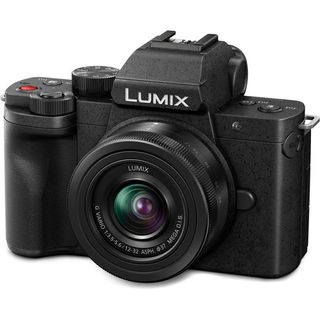
If you want a small camera that shoots great stills and video, and cost costs the earth the Panasonic Lumix G100D is the best budget option out there for travel. Although the G100D is only a slightly newer G100, which is much the same, but with a USB-C port and upgraded EVF.

The Fujifilm X-S20 is a camera for everyone, with great quality stills, but is set apart by its deceptively powerful video skills. This makes the X-S20 the perfect travel camera for any hybrid creator who is a versatile and lightweight camera, all at a price tag that won't break the bank.
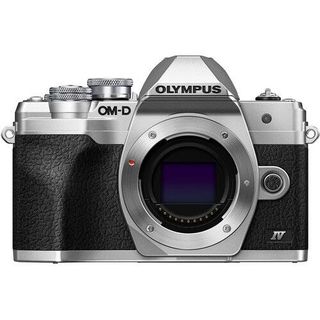
When picking the best travel camera, we're focusing on portability. If you want to fit a whole photographic kit – that's a camera and several lenses into a bag, then the dinky but mighty Olympus OM-D E-M10 Mark IV is one of the best portable cameras around.
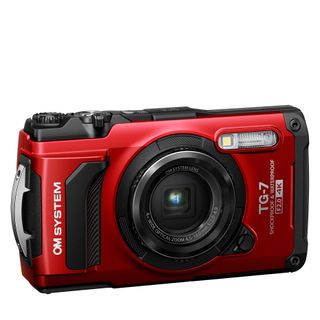
If you're planning on a coastal adventure then you need a camera that is fully waterproof and rugged enough to take on the most challenging adventures. This camera offers better stills than your average action cam, so if photos are your main priority – the Tough TG-7 is for you.
View the full list ⇩

This is a camera that can withstand some serious adventuring, action cameras are made for extreme conditions, and the best of the bunch is the Osmo Action 4. The Osmo 4 offers an incredibly wide field of view, image stabilization, and waterproofing for action-packed vacations.
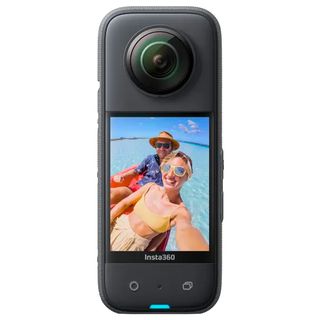
If you want to remember every little bit of your vacation, then you can't go wrong with a 360º camera to capture not what only is going on in front of you, but all around you. The Insta360 X3 is the best all-encompassing camera you can buy, best of all it is easy to slip into a pocket or bag for travel.
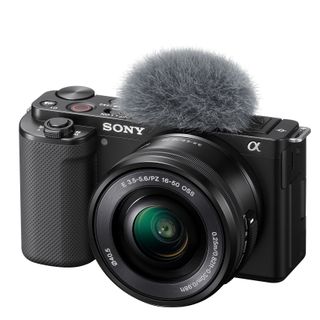
If you are looking for a small yet mighty all-in-one camera with quality video and audio made to go straight on social media or YouTube then the Sony ZV-E10 is the best choice. It does take decent pictures, but if you are looking for something more hybrid, check out the X-S20 above.
The best travel camera in 2024
Why you can trust Digital Camera World Our expert reviewers spend hours testing and comparing products and services so you can choose the best for you. Find out how we test.
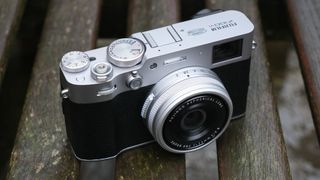
1. Fujifilm X100VI
Our expert review:
Specifications
Reasons to buy, reasons to avoid.
✅ You want a pocketable camera: the Fujifilm X100VI is a very compact camera, the whole package of camera and lens are so small that you can easily slip this into a jacket or rucksack pocket. ✅ You want a camera that looks good: The X100VI is easily one of the best-looking cameras you can buy. The stunning retro looks of old-school film cameras are matched with superb build quality.
❌ You want a range of lenses: the lens is fixed on the X100VI, so you are stuck with the 23mm focal length, although its digital cropping modes give the illusion (but not performance) of more focal lengths ❌ You want a cheap travel camera: the X100VI has a premium price tag, and there are options that produce a similar image quality, if you don't mind a different style of camera that is.
If you are looking for a camera for traveling, then one of the major things to look out for is something small and lightweight that can easily slip into a bag or a jacket pocket and won't be a drag to carry around for long periods – enter the Fujifilm X100VI .
The X100VI is a fixed-lens camera, which means that it has a single lens that can't be changed. The lens is 23mm, or equivalent to a 35mm length lens on on a full-frame camera, a perfect length for travel photography as it is wide enough to get in landscapes and street scenes, but narrow enough for portraits and family shots. While there are converters available for the X100V to change the length of the lens, I find these have an adverse effect on image quality. The X100VI does have a trick to crop images when taking them to give the illusion of additional focal lengths, although at a reduced size.
The X100V packs in some lovely 40MP photos, and while not the most ideal camera for video, you can get 6.2K (cropped), 4K, or HD video with slow motion reaching 240 frames per second. There is also human, animal, bird, and vehicle autofocus tracking, so you can snap away with confidence that your shots will be in focus. Finally, image stabilization helps cut out hand jitters in low light or shooting video, for more stable footage.
And for those who want to share travel snaps as you go, you get access to Fujifilm 's awesome film simulations and custom recipes, which takes the work out of editing, and with WiFi and Bluetooth connectivity and the Fujifilm X App, you can quickly share ready to post photos and video to social from your phone.
The X100VI's design will catch a few eyes while traveling. The camera is lovely to hold, made with premium materials, and with a wonderful hybrid optical viewfinder that shows either the real picture or how it looks through the sensor with a flick of a button. However, as a major downside for travel, the X100VI lens is not weather-sealed without an adapter – at an additional cost.
Speaking of cost, this premium camera comes at a premium price, with some similar tech available for less in other models. But for the build quality and features, I think it does a lot to justify its higher price, but if you want the best compact camera, there is nothing better than this.
Read our full Fujifilm X100VI review for more
- Back to the top ⇪
Best full frame on a budget
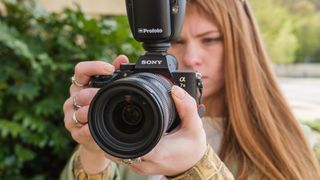
2. Sony A7 III
✅ You want full frame quality: full frame cameras can produce more focus separation and are better in low light, the A7 III is the most affordable step into full frame. ✅ You want a camera to use outside of traveling: the A7 III is a pro-level camera that is not just for travel, you can shoot brilliant photos all year round with a multitude of lenses available for different subjects.
❌ You don't want the expense of lenses: the cost of lenses can add up, especially ones for full-frame cameras, if you want to keep costs low, choose a fixed lens camera or an option with smaller cheaper lenses. ❌ You want a small camera: the A7 III isn't huge, but it also isn't small. With a lens attached, it is going to take up quite a bit of room in a bag, and won't be sliding in any pocket.
While the Sony A7 III might be the oldest Sony Alpha camera still being sold as new, even being replaced by a newer Sony A7 VI, it more than holds its own today. Any photographer looking for an excellent full-frame hybrid camera for traveling should seriously consider this camera as an option.
Why? Well, I don't think there is a better value full-frame camera out there, which when traveling can take some of the jeopardy out of damaging or losing your incredibly expensive kit.
It might be getting on a little, but the camera still has a very competitive 24.2MP back-illuminated image sensor, which delivers great tonal range and makes high ISO settings possible, which anyone who is shooting a lot in low light on their travels will really appreciate. A 5-axis image stabilization system also delivers less shake when shooting at night, or capturing video.
And if you are also looking to get some video footage on your travels then the A7III has very capable 4K video, although has been surpassed by a few other models on this list which would be more suitable if video is a priority.
The A7III has a speedy and accurate 696-point AF system, and while not the latest algorithms, the A7 III also has some solid human face and eye tracking, so you can take reliably focused photos of your friends, family, or any interesting denizens you meet out on your travels.
Whilst the A7III can be thrown a little off-balance with big pro lenses, Sony's lens range is extensive and there are many smaller primes to suit this camera perfectly for those who don't want to carry a lot while traveling. Or superzoom lenses like the Sony FE 24-240mm will empower you to capture everything from near to far.
Read our full Sony A7 III review
Best travel camera on a budget

3. Panasonic Lumix G100D
✅ You want an affordable camera: the Lumix G100D is a great deal for the features it offers, and an affordable way to get great travel snaps. ✅ You want a range of small lenses: there are a lot of Micro Four Thirds lenses, so there is something for every occasion, and best of all, they tend to be on the smaller side for easy travel.
❌ You want the very latest tech: the G100D is a little on the older side and doesn't have Panasonic's latest autofocus, which puts it a little behind the competition. ❌ You want more serious creative video: intended as a hybrid camera, there are lots of video-focused features, but the camera lacks IBIS and a headphone jack/USB-C found in rivals.
Sometimes, you just want to create quality images and video while you are traveling, beyond what your phone is capable of, but you also don't want to pay a small fortune for the privilege. The Panasonic Lumix G100D is the best camera you can get for traveling that offers all the quality features you will need but at an affordable price.
The G100D is a super-small, super-cute camera with a Micro Four Thirds sensor. It is still easy to capture high-quality video and stills with simple controls, menus, and its approachable button layout. The camera can be paired with numerous dinky Micro Four Thirds lenses too, especially small pancake lenses to keep the overall size down. Micro Four Thirds also has the benefit of doubling the focal length, so 100mm becomes 200mm, so you can pair the G100 camera with telephoto lenses for capturing far away subjects like wildlife without having to carry huge lenses.
A downside though is there is some compromise for the low price, and the G100D is not the most technically advanced camera on this list, and its autofocus uses Panasonic's cruder contrast-detect technology, which is a little slower than other cameras and is notorious for "pulsing" and "hunting" during video.
Despite this, the G10S0 is also a perfect camera for vloggers, with an articulating screen and ready to share footage. But while there’s an inherent risk of dumbing things down too much when creating a camera for social media creatives, Panasonic has avoided that pitfall with the Lumix G100D, and this is a great camera if you're just as interested in vlogging as you are in travel photography.
Read our full Panasonic Lumix G100D review
Best hybrid travel camera
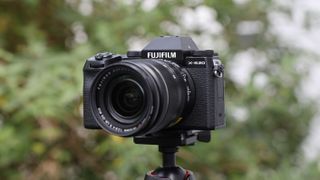
4. Fujifilm X-S20
✅ You shoot video and photos: the Fujifilm X-S20 is the best of both worlds, with great-looking photos and awesome video skills too! ✅ You want to balance price and features: the X-S20 offers a lot for its price, and it is one of the best-value cameras around, you will struggle to find matching video specs at this price point.
❌ You don't really care about video: there are other options that might suit photographers more than the X-S20 with higher megapixel counts. ❌ You might need weather resistance: the X-S20 is not weather-sealed, so if you plan to get adventurous, a camera that can handle dust and water might be a better choice.
When I tested the Fujifilm X-S20 I was just so impressed at the amount of features that Fujifilm had managed to squeeze into its petite body – it's not just a great stills camera, it is also one of the best video cameras available, and the cherry on top, it is really well priced! For anyone looking for a hybrid camera to shoot a mix of photos and video, I think this is the best camera for any traveler right now.
Fujifilm chose not to update the X-Trans IV sensor from the X-S10, but this sensor despite its age still holds up very well today when it comes to stills. The X-S20 is also able to use Fujifilm's excellent film simulations and programmable film recipes to create ready-to-use images straight from the camera, which makes any regular social media posting that much easier. The new X-Processor 5 also brings brand new subject recognition and tracking autofocus, making taking photos on the fly quicker and more reliable.
Despite its compact size, the X-S20 is a deceptively powerful video camera. The new processor combined with the modest resolution sensor means the X-S20 is capable of 6K video using the entire sensor (open-gate). The camera is also capable of numerous codecs and F-Log for getting in-depth with color grading. The subject recognition and tracking also carry through into videos and there are dedicated vlogging video features too.
Some might prefer the classic retro style like the X-T5 or X-T30 II, but with fewer manual dials, the X-S20 is a more user-friendly camera, with a more useful fully articulating screen than any of the X-T range. The camera is small, but handling is great with enough of a comfortable grip for long days, and the camera pairs really well with Fujifilm's small zoom and prime lenses, making traveling light with a kitted-out X-S20 a little easier. While the price is a little higher than the X-S10 that preceded it, I think the price bump is justified as this is one capable camera for traveling.
Read more: Fujifilm X-S20 review
Best travel camera for size
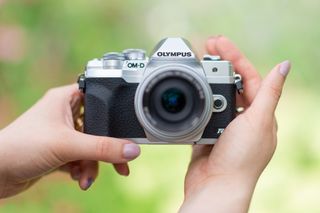
5. Olympus OM-D E-M10 Mark IV
✅ You want a small system: the whole OM Micro Four Thirds system is tiny, with small cameras and lenses, so you can take a lot more gear to cover more subjects. ✅ You want a good-looking camera: with a cool vintage style based on Olympus's OM film cameras, the E-M10 IV looks as good as the footage it shoots.
❌ You shoot a lot in low light: the Micro Four Thirds sensor in the E-M10 IV doesn't handle low light as well as larger sensors, not good for frequent nighttime shooters. ❌ You won't use the retro dials: if you are looking for just fast auto controls then the dials on the top of the E-M10 IV will be largely redundant for your needs.
When picking the best travel camera, we're focusing on portability, and the dinky but mighty Olympus OM-D E-M10 Mark IV is one of the best portable cameras around if you are looking for a whole system including lenses that can easily slip into a bag. The best Olympus lenses include positively tiny optics that can go a long way for travel photography, helping you keep your kit and weight size down. So if you are the type of carry-on-only travel photographer but with big photography ambitions then this is for you.
Not only does it have an incredibly lightweight body, but the camera will look great on your travels too, with a cool retro design that harks back to Olympus's long pedigree in film cameras. The camera has tactile dial-led controls for anyone who wants to get creative with manual photography, although don't let that fool you into thinking the camera is complicated, as there are lots of automatic modes and helpful features built into the camera.
The OM-D E-M10 Mark IV uses the smaller but still powerful Micro Four Thirds sensor. This has some slight disadvantages in terms of low-light capabilities, so if you like to go out a lot at night when you travel, then a larger sensor might be better for you.
But Micro Four Thirds does have one big advantage, it effectively doubles the focal length of any lens mounted to the camera; so a 50mm will behave like a 100mm, so if you are about to head off on safari, then this could make all the difference to getting up close to wildlife. Its snappy burst shooting, its accurate autofocus, and its impressive 4K video will also all assist you with creating amazing content. It's a terrific all-around camera.
Read our full Olympus OM-D E-M10 Mark IV review for more
Best waterproof compact travel camera

6. OM System Tough TG-7
✅ You want a rugged adventure camera: the TG-7 can certainly withstand some serious adventuring with a rugged water/dust/freeze/drop-proof build. ✅ You want a photography-first adventure camera: the TG-7 puts photography first and foremost, offering a better experience than smaller fiddly action cameras.
❌ You want to strap the camera to things: while action cameras have numerous accessories to strap to your sports equipment, there is far less for the bigger TG-7. ❌ You only care about video: if you are just looking for the best rugged video camera for travel, then action cameras have you covered (see below).
Following the acquisition of Olympus's camera division, the OM System TG-7 is essentially an update to the much-loved Olympus Tough TG-6 under a new brand name. Although that camera has long been the top-regarded travel compact for adventurers who are as invested in photos as video. Action cameras might be smaller and just as hardy, but can't compete with the TG-7 for photography experience.
The TG-7 is ready for any travel adventure and is water-proof, dust-proof, crush-proof, drop-proof, and freeze-proof, so whether your hiking, climbing, swimming, or otherwise take you to the hottest deserts to the coldest tundras, the camera should come out the other side unscathed.
The TG-7 might have a relatively conservative 12MP resolution, although this helps dramatically when it comes to low-light images, as each pixel is larger allowing it to capture more light. Why is this important? Well if you are shooting in darker underwater environments, in gloomy forests, or at night, then you will get higher-quality images.
The Touch also has RAW images, so you can get even more creative control over the final edit of your images. The camera also has a pretty incredible macro mode as well if you find some small details on your travels that you have to capture.
While it might not be up to the same standard as the best action cameras for video (see below for that), the Tough can capture decent 4K video, and will get some perfectly serviceable footage for social and YouTube of your wild adventures!
Read our full OM System Tough TG-7 review
Best action camera for travel
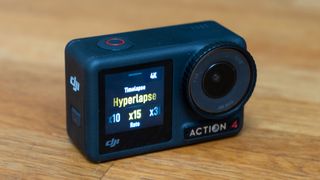
7. DJI Osmo Action 4
✅ You want a camera that can keep up with your travel adventures: the Osmo 4 is hardy enough for whatever conditions you throw at it, weather-sealed and fantastic stabilized footage. ✅ You want a tiny camera: action cameras like the Osmo 4 are great as they are so small they are effortless to travel with.
❌ You want to shoot high quality photos: the 12MP photos from the Osmo 4 can't compete with more dedicated cameras, and the wide angle lens needs lots of corrections. ❌ You need accessories: the market for DJI accessories isn't as big as the more famous GoPro, so if you need niche or cheaper accessories, that might be the brand to choose.
For most adventurer-creators, the Osmo Action 4 is the perfect balance of quality and price. Stabilized 4K video looks great and the camera can take a lot – not just rough and tumble but temperature extremes and it's waterproof to 16m without a case. Best of all, it has a larger image sensor than any other camera on the list, so it is better in lower light, making it more flexible.
DJI did have an interesting experiment with modular design, now seemingly abandoned, with the Action 2, but they do retain powerful magnetic mounts which can even partially survive the heat of an oven (we tried accidentally – see our full review).
Like the more famous competition, DJI has high-quality horizon balancing and image stabilization, which has improved on the Action 3. The resolution limit is 4K, but in practice, this is the ideal resolution for action (and the limit of almost all TVs). More useful is the 120fps capability (or 240fps at 1080P).
The fact that Action 4’s isn’t interwoven with subscription software is one we wholeheartedly appreciate, too, but GoPro seem to finally growing out of this.
Read our full DJI Osmo Action 4 review
Best 360º camera for travel
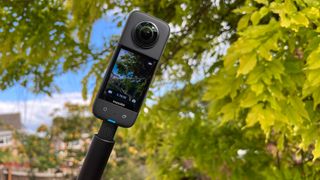
8. Insta360 X3
✅ You want to capture everything: the Insta360 X3 can capture all that goes on around you, perfect for capturing immersive travel content. ✅ You want to travel light: the Insta360 X3 is very small and lightweight, and won't trouble your carry-on bag limits.
❌ You want a versatile camera: the Insta360 X3 is made for one thing, and that is great 360º footage, if you want to capture more, you might need to bring a second camera. ❌ You want artistic images: the Insta360 X3 has big 72MP images but the small sensor means they aren't as creative as a bigger camera.
The new Insta360 X4 has just launched offering 8K video and an updated design, but I still think the X3 offers great features for a much better value, so it remains in this guide for now!
There are times when handling even an action camera's wide-angle lens becomes a problem, and that's where a 360-degree action camera can step in. With two back-to-back lenses and enough smarts to eliminate a selfie stick from the footage, this almost magic camera can capture an image from a point within reach looking any direction you see fit.
I tried it with the bike attachment – which holds the camera a little way in front of the bike, over the front wheel – and was amazed at the footage which makes it look like I'm cycling toward a perfectly controlled drone. Better still, by syncing with my phone I could draw GPS data and have it overlaid, in the form of a speedometer, by the Insta360 app before sharing.
The only real worry is how naked those glass lenses are when the camera is in use; the joy of re-positioning the camera angle after the fact can be hours of fun. 5.7K is good enough for sharing, but more resolution would help pro work.
Read our full Insta 360 X3 review for more details
Best for travel vloggers

9. Sony ZV-E10
✅ You want ready-to-share footage: this Sony is made for capturing footage with minimal editing to get up on YouTube and social media straight away. ✅ You want excellent audio: the ZV-E10 has built-in stereo microphones that capture some of the best audio possible on a camera without external mics.
❌ You are more interested in photos: the ZV-E10 is not a bad photography camera, but its video focused build means other cameras are better for stills shooters. ❌ You want a viewfinder for framing: if you love a viewfinder for framing shots, then the Sony A6400 is almost the same camera, but with an EVF.
The ZV-E10 makes for an excellent traveler's camera and is one of the cheapest vlogging-focused cameras yet. Combined with its slim dimensions, and wide choice of lenses, this makes it a perfect choice for travelers who want to shoot a lot of video.
The big selling point of the ZV-E10 over other cameras capable of similar video is that the ZV-E10 comes with sophisticated built-in mics and a clip-on windshield for noise reduction, making it much easier to get clean audio on your vlogs even outdoors – which works excellently. Sony has put its years of audio experience into this camera and it shows.
The ZV-E10's 4K UHD video is of excellent quality too, and as we've come to expect from Sony, the autofocus is best in class, whether shooting video or stills. The camera has tracking modes for easy autofocus and digital image stabilization that crops your footage slightly but attempts to iron out any shake, which works well except for in very heavy movement.
And a point worth mentioning is that, while the ZV-E10 may be optimized for vlogging, it's still a capable stills camera with a 24MP sensor, and 11fps burst shooting, so photographers needed worry about restricting themselves with it.
However, if you are more keen on photography than video, cameras in the Sony a6xxx range (like the Sony a6400 ) offer almost the same specs, but with a viewfinder, but you do lose the built-in stereo mics. Making it a tough choice for a hybrid shooter that might want the best of both worlds.
Read our full Sony ZV-E10 review
How to choose the right travel camera
These are five key things to look out for when choosing the right travel camera for your needs.
1) Image quality: Ask yourself how you will use any photos or videos you capture. If you only plan to share content online on social media then any of the above cameras will be suitable. If you plan to print your pictures, though, then mirrorless cameras with larger sensors and higher megapixel counts will produce better-quality results.
2) Focal range: What kind of range do you need for your traveling activities? Compact cameras can have impressive zoom ranges, but to achieve their tiny size they often lack quality compared to mirrorless cameras. For mirrorless cameras, what lenses are available? So-called standard zooms are a great option for all types of travel, but they can also be large and heavy. A wide-angle lens might be best for capturing cities and landscapes, or if you are going to see wildlife or a sporting event then a compact telephoto lens might be best.
3) Size and weight: If you're going on vacation then the last thing you want to take is a heavy kit – especially given things like baggage restrictions when traveling. With that in mind, both your camera and lens(es) need to be small and light. If you want something that can fit in your pocket, get a compact camera – but if you don't mind taking a bag, a mirrorless system with one or two lenses could be more versatile.
4) Simplicity: Don't want to get bogged down with camera settings? Most modern cameras have a range of auto modes – especially compact cameras, which take away the stress. Advanced modes and complicated controls don't usually mix with spur-of-the-moment snaps, so decide what is important to you and pick your camera based on that.
5) Price: The cameras in our list have a range of prices, and we try to include cameras that suit every budget. The price of a camera usually reflects its capabilities, although all the options listed here will take great images and video – so try to strike the right balance between what you need in a camera and what you can afford.
Is it better to use phone or camera for travel?
We covered this a little bit at the start of the article, but the answer is that it is always better to use a camera for stills or video when possible. So the question really becomes, "Do your travel plans make using a camera possible?" Phones are so small and quick to use that they go where cameras are too bulky and slow to shoot. A great compromise is a compact camera – or the Olympus Tough TG-6 , which is a weather-proof camera that goes the places that you wouldn't dare to use your phone!
Is a DSLR or mirrorless camera better for travel photography?
As a travel camera, mirrorless cameras are usually the better choice for most people. They are much small and lighter than DSLRs, and also usually have a selection of smaller and lighter lenses to match. This makes traveling easier as it takes up less space and weight in increasingly restricted carry-on bags. Mirrorless cameras also are generally newer than DSLRs and most likely have more modern technology, making photography and video easier to capture and of better quality.
What size camera lens is best for travel?
Again, this comes down to what your travel plans entail and what you plan to shoot. The kit lens that comes bundled with many cameras will cover the most commonly used focal ranges, so that's a good place to start (though kit lenses do not deliver the best image quality). We recommend checking out the best lenses for travel photography to see what's right for you.
How we test travel cameras
When we are reviewing cameras, we carefully think about what scenarios each camera could be used for. When considering which cameras would make ideal travel cameras, we judge each camera on how small and lightweight it is for easy packing and transport, as well as carrying for long periods of the day while out exploring.
We also consider the technical capabilities of each camera, and how suitable they are specifically for travel photography scenarios from beach vacations to safaris, to city breaks. Finally, we consider the price of the cameras to select options that cover a range of budgets and requirements.
We use our real-world experience with each camera and our in-depth camera knowledge to determine a final selection of top cameras that we would recommend as the ideal camera traveling companions.
Want to find out how we test and review DSLR and mirrorless cameras? We trial cameras both in real-world shooting scenarios and in carefully controlled lab conditions. Our lab tests will generally measure resolution, dynamic range, and signal-to-noise ratio, which gives us a benchmark by which to compare cameras.
Resolution is measured using ISO resolution charts, dynamic range is measured using DxO Analyzer test equipment and DxO Analyzer is also used for noise analysis across the camera's ISO range. Our compact camera evaluations are based on real-world testing alone.
For our real-world testing, our reviewers spend time with each camera, testing it in a variety of shooting situations and providing their qualitative thoughts on how the camera was to use and evaluating the images and video it produced. Here's an example of how we literally take a camera on vacation to evaluate it!
Get the Digital Camera World Newsletter
The best camera deals, reviews, product advice, and unmissable photography news, direct to your inbox!
Gareth is a photographer based in London, working as a freelance photographer and videographer for the past several years, having the privilege to shoot for some household names. With work focusing on fashion, portrait and lifestyle content creation, he has developed a range of skills covering everything from editorial shoots to social media videos. Outside of work, he has a personal passion for travel and nature photography, with a devotion to sustainability and environmental causes.
- James Artaius Editor
Related articles
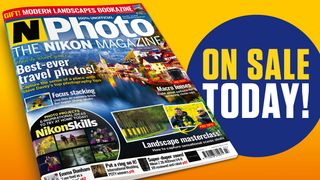
- Search Please fill out this field.
- Manage Your Subscription
- Give a Gift Subscription
- Newsletters
- Sweepstakes
We independently evaluate all of our recommendations. If you click on links we provide, we may receive compensation.
- Travel Products
- Tech Essentials
The 13 Best Compact Cameras of 2024
These are the top point-and-shoot options for epic travel photography.
:max_bytes(150000):strip_icc():format(webp)/JessicaMacdonald-348aae07a15a41db984f7b3091d7dc40.png)
In This Article
- Our Top Picks
- Tips for Buying
Frequently Asked Questions
- Why Trust T + L
Travel + Leisure / David Hattan
What’s the best way to relive your favorite travel experiences over and over again? By taking epic photos that you can upload to social media or transform into a coffee table photo book, of course. Investing in a proper camera with a high-quality sensor and a decent number of megapixels will yield better, more printable results than your phone camera. But that doesn’t mean you need to lug a full-size DSLR and several interchangeable lenses around with you. You can get amazing results with a compact, or point-and-shoot, camera.
B&H Senior Technologist Mark Steinberg defines a compact camera as one that is “pocketable, with a minimum number of protrusions, that can be used one-handed.” They’re a great option for anyone who prioritizes easy portability or casual photographers who want good results without a steep learning curve. There are several different kinds of compact cameras, from the budget-friendly to the professional quality, and from digital to film and instant. We’ve researched them all to find the best options across several different categories.
Best Overall
Sony cyber-shot dsc-rx100 vii digital camera.
B&H Photo
It has a high-quality sensor, near-instant autofocus, and a lens that fulfills both wide-angle and telephoto functions.
It’s an expensive option for occasional use only.
Chosen by Mark Steinberg as the best overall compact camera, the Sony Cyber-shot DSC-RX100 VII is the seventh generation of a series that has been raising the bar for compacts since its inception. It’s simple to use for novice photographers, with enough manual settings to allow for experimentation and growth. The 1-inch Exmor RS BSI CMOS sensor is a major highlight, allowing for high sensitivity with a maximum resolution of 20.1 megapixels. With 8x optical zoom and 24–200mm equivalence, the ZEISS Vario-Sonnar T* lens gives you the freedom to switch between wide angle and telephoto photography for everything from landscapes to wildlife.
Whatever your subject, the 0.02-second hybrid autofocus ensures sharp images in both still and video mode. You can shoot single, continuous, burst, and self-timer images and set an upper or lower limit for your ISO up to a maximum of 12800 for impressive low-light results. If film is your passion, you’ll love the camera’s 20 frames-per-second, 4K video for its smooth movement and cinema-quality resolution. When it comes to viewing your footage, framing (and taking) your shot, or scrolling through the menu, use the 180-degree-flip LCD touchscreen. In high-glare conditions, you can also revert to the pop-up electronic viewfinder.
The RX100 VII offers Bluetooth and Wi-Fi connectivity for instant uploads to social media.
The Details: 20.1 megapixels | 1-inch Exmor RS BSI CMOS Sensor | 24–200mm lens | 3-inch LCD screen | 4K video | 4 x 2.3 x 1.7 inches | 10.7 ounces | Electronic viewfinder
Best Image Quality
Ricoh gr iiix digital camera.
This camera uses advanced lens and sensor technology to deliver undistorted, true-color images with a high level of sharpness across the entire frame.
If video is a priority, bear in mind that the GR IIIx shoots Full HD rather than 4K.
Suitable for all experience levels, the Ricoh GR IIIx Digital Camera was designed with the express purpose of providing superior image quality. The 26.1mm GR lens offers a 40mm angle of view in the 35mm format that’s meant to mirror your natural field of view. It also uses premium technology to eliminate distortion, render colors accurately, and create amazingly sharp images. This is complemented by the camera’s high-resolution CMOS image sensor, which captures HD detail suitable for large-scale prints with up to 24.2 megapixels.
Other highlights include the camera’s impressive shake reduction technology and its fast, precise hybrid autofocus with eight focus modes to choose from including one that automatically detects the eyes and faces for perfect portraits. We love that you can shoot in macro, while an interval composite shooting mode allows you to capture star trail images (you’ll need to buy a tripod separately.) These are the unique images that set your travel shots apart. The camera offers Full HD video, a LCD touch screen with instantly adjustable brightness, and 2GB of built-in memory — a lifesaver when your memory card malfunctions at the crucial moment.
The Details: 24.2 megapixels | 1-inch CMOS sensor | 26.1mm GR lens | 3-inch LCD screen | Full HD video | 4.3 x 2.4 x 1.4 inches | 9.2 ounces | No viewfinder
Best Full-frame Compact
Sony cyber-shot rx1r ii digital camera.
This camera packs the full-frame sensor of a professional DSLR into an unbelievably compact, travel-sized body.
You could buy a good DSLR body and lens for a similar price.
The Sony Cyber-shot DSC-RX1R II is meant for professional photographers with a price tag and learning curve to match. The 35mm full-frame back-illuminated CMOS sensor is the largest available, offering more light, more information, better quality, and a greater dynamic range than the APS-C frame found in standard compact cameras. With 42.5 megapixels and the ability to shoot in uncompressed 14-bit RAW, this camera will produce pro-quality, large-scale prints with an astonishing amount of detail.
The ZEISS Sonnar T* 35mm f/2 lens is fixed with no optical zoom, making it best for wide-angle and close-up subjects (and especially, street photography). The large aperture allows you to work in low light and use an unusually shallow depth of field. And, if you’re familiar with terms like moiré and aliasing, you’ll appreciate the inclusion of the world’s first optical variable low-pass filter for reducing these kinds of distortion. Other perks include super-fast hybrid autofocus, Full HD video with the ability to capture slow-motion HD video, an electronic viewfinder, and an adjustable 3-inch LCD screen.
The Details: 42.4 megapixels | Full-frame BSI CMOS sensor | 35mm lens | 3-inch LCD screen | Full HD video | 4.5 x 2.6 x 2.8 inches | 1.1 pounds | Electronic viewfinder
Panasonic Lumix DC-ZS200D Digital Camera
You can bring subjects 15 times closer without sacrificing image quality, thanks to its optical zoom.
It’s slightly heavier and bulkier than some of the other compact cameras on this list.
If you want to be able to photograph animals, birds, or any other subject from a distance without forking out thousands of dollars for a DSLR with a telephoto lens, the Panasonic Lumix DC-ZS200D is an excellent option. The Leica DC Vario-Elmar 24–360mm lens offers a 15x optical zoom — which brings subjects 15 times closer without any of the pixelation associated with digital zoom. Optical Image Stabilizer technology means your photos won’t suffer from blurry camera shake either.
The 1-inch MOS sensor with 20.1 megapixels results in bright, colorful images that lend themselves well to print. You can expand your photographic skills by playing around with traditional aperture and shutter priority modes, or use preset scene and filter modes for instantly different effects. We especially love the camera’s Post Focus feature, which varies the focal point while taking 30 photos per second so that you can go back afterwards and select the best one. In terms of video, shoot in 4K or use high-speed Full HD for instant 120 frames-per-second, slow-motion playback.
The Details: 20.1 megapixels | 1-inch MOS sensor | 24–360mm lens | 3-inch OLED screen | 4K video | 4.4 x 2.6 x 1.8 inches | 12 ounces | Electronic viewfinder
Best Splurge
Leica q3 digital camera.
This is a professional camera that pays equal attention to still images and video, delivering best-in-class results for both.
It’s not the best choice for those who want telephoto functionality.
The Leica Q3 is an ultra-exclusive option limited to one purchase per customer. And don’t be fooled by its compact size — coming in at just under $6,000, it’s a premium product for serious professionals. It boasts a full-frame BSI CMOS sensor for unparalleled photo and video quality. With a maximum aperture size of f/1.7 and a maximum ISO of 100000, it performs unbelievably well in low light conditions. The Summilux 28mm fixed lens includes an integrated macro mode, making the camera ideal for close-up work as well as wide-angle street photography.
There’s no optical zoom. However, Triple Resolution Technology with up to 60 megapixels means you can use the digital zoom without losing significant detail. You can also shoot in 36 or 18 megapixel mode to save space on your memory card. Video is equally versatile with multiple formats to choose from including 8K, 4K, ProRes, and Full HD. All of your work benefits from hybrid autofocus and subject tracking, while the Leica FOTOS app can be used for audiovisual content creation. Finally, you can frame shots using the 3-inch display or the OLED viewfinder.
The Details: Up to 60 megapixels | Full-frame BSI CMOS sensor | 28mm lens | 3-inch LCD screen | 8K video | 5.1 x 3.2 x 3.6 inches | 1.6 pounds | Electronic viewfinder
Best for Videos and Vlogging
Canon powershot g7 x mark iii camera.
Designed to shoot high-quality video in vertical or horizontal formats, this camera offers Wi-Fi and Bluetooth connectivity and can live-stream direct to YouTube.
To realize full vlogging potential, you may need to purchase a tripod and remote control separately.
Looking for the best camera for filming quality reels? The Canon PowerShot G7 X Mark III is designed especially for this purpose with 4K and Full HD video, the ability to shoot horizontally or vertically, Wi-Fi and Bluetooth connectivity to social media, and the ability to live stream straight to YouTube. Whether you’re shooting video or still photos, the fact that you can tilt the LCD touch screen by 180 degrees makes it ideal for framing quality selfies.
The technology is impressive, too. We’re talking a 1-inch stacked CMOS sensor paired with a DIGIC 8 image processor for exceptionally fast autofocusing, with facial recognition that puts you in the center no matter how much you move around. The 24–100mm lens is suitable for a versatile mix of wide-angle and short telephoto shots, while the f/1.8-2.8 aperture performs well in low light conditions. Finally, the Optical Image Stabilizer reduces camera shake for clear, crisp results. Adding other gadgets is easy. The camera has a 3.5mm microphone terminal and can be purchased as part of a video creator kit that includes a tripod grip and remote control.
The Details: 20.1 megapixels | 1-inch stacked CMOS sensor | 24–100mm lens | 3-inch LCD screen | 4K video | 4.1 x 2.4 x 1.6 inches | 10.7 ounces | No viewfinder
Fujifilm X100VI Camera
This camera combines state-of-the-art technology with a vintage aesthetic and a full range of film simulation modes.
The lens is fixed, so any zoom comes with the compromise of digital cropping.
First off, the Fujifilm X100VI just looks cool, with a gorgeous silver-and-black or all-black aesthetic reminiscent of a vintage film camera. Beneath the retro exterior lies a cutting-edge X-Trans CMOS 5 HR sensor with a revolutionary image-processing algorithm for efficient light reception and amazing image resolution at any ISO sensitivity. Thanks to the fixed 23mm f/2 lens, you’ll also get 35mm equivalency in terms of low-light performance and the ability to achieve a shallow depth of field — for a much lower cost than a full-frame compact camera.
You can zoom digitally by 1.4x or 2x. The 425-point intelligent autofocus system is super fast, while built-in image stabilization reduces the appearance of camera shake by up to six f-stops. And when it comes to video, you can switch between 6.2K, 4K, and Full HD at will. Above all, we love that this camera includes 20 simulation modes inspired by iconic Fujifilm film types ranging from Eterna Bleach Bypass to Nostalgic Neg. You can even shoot using a Grain Effect that replicates the textured look of vintage film photography.
The Details: 40.2 megapixels | X-Trans CMOS 5 HR sensor | 23mm lens | 3-inch LCD screen | 6.2K video | 5 x 3 x 2.1 inches | 1.1 pounds | Hybrid electronic and optical viewfinder
Kodak Ektar H35 Half Frame Film Camera
It’s an inexpensive and easy-to-use film camera for maximum fun.
There’s a limit to how much you can do with such a basic setup, so it may not be ideal as your primary travel camera.
Perhaps you feel nostalgic for the days of film, or perhaps you grew up in the digital era and want to experience photography as it used to be. Either way, the Kodak Ektar H35 Half Frame Film Camera is great for film novices, those wanting to stretch their abilities as a photographer, and those who just love the retro look of original film. It’s inexpensive in terms of initial layout and because the half-frame format gives you twice as many images per roll as you’d get from a full-frame camera.
Weighing in at just three and a half ounces, this pocket-sized camera is made for on-the-go convenience. It features a 22mm f/9.5 lens — so with no zoom and no autofocus, it’s best for wide-angle shots and back-to-basics experimentation that’s as fun as it is challenging. You can frame shots using the optical viewfinder and deploy the built-in flash in low light or at night. The camera is compatible with black-and-white and color film and requires one AAA battery to work. Choose yours in Black, Brown, Sand, or Sage.
The Details: 22mm lens | 4.3 x 2.4 x 1.5 inches | 3.5 ounces | Optical viewfinder
Best Instant
Fujifilm instax mini evo instant camera.
Not only can you print photos instantly, you can also save a digital version to your smartphone via the app.
You’ll need to recharge after approximately 100 photos.
Available with a retro black or brown leather effect, the Fujifilm Instax Mini Evo Instant Camera lets you create 2 x 3-inch prints of your images in approximately 16 seconds. It features an autofocusing 28mm f/2 lens and uses automatic shutter speed and ISO for fool-proof results. Expressing your creativity is easy, with 10 lens effects (including Light Leak, Double Exposure, and Soft Focus) and 10 film effects from Vivid to Sepia. You can use these interchangeably for a total of 100 different possibilities.
Other features include a built-in flash, a self-timer, a selfie mirror, and a 3-inch LCD screen. What makes this instant camera different from the Polaroids of the past is the ability to use it in conjunction with the INSTAX app. This means being able to use your smartphone as a remote for releasing the camera shutter (handy for group shots and selfies) and being able to save a digital version of your instant prints complete with an INSTAX frame. From there, you can upload them to social media. You can even use Bluetooth to send pictures from your smartphone to the camera to print.
The Details: 2560 x 1920 pixels | 1/5-inch CMOS sensor | 28mm lens | 3-inch LCD screen | 4.8 x 3.4 x 1.4 inches | 10.1 ounces | No viewfinder
Best Durable
Ricoh pentax wg-90 digital camera.
Drop it, crush it, take it out in a sandstorm or underwater and this camera should still emerge in one piece.
If you’re looking for an underwater camera for scuba diving, scroll on — we’ve found ones with better depth ratings.
When it comes to durability, B&H’s Mark Steinberg recommends the Ricoh Pentax WG-90 above all others. It lives up to its armored appearance with some pretty impressive technical specs. It’s waterproof up to 46 feet underwater for up to two hours of continuous operation, making it ideal for surface water sports or snorkeling. It’s also shockproof against falls from five feet, crushproof against 220-pound-force weights, and dustproof. Heading somewhere cold? Unlike many of the cameras on this list, this one will still operate in temperatures as low as 14 degrees Fahrenheit.
Toughness aside, it’s also a great little camera from a photography perspective. The 16-megapixel BSI CMOS sensor offers high sensitivity and minimal noise, even when using the maximum ISO setting (6400.) A built-in ring light and flash help out in low-light situations, while the 28–140mm equivalent lens is suited to both wide-angle and short telephoto use with a 5x optical zoom. Choose from a range of shooting modes including Fish-Eye, Sports, and Handheld Night; or capture moving images with Full HD video.
The Details: 16 megapixels | 1/2.3-inch BSI CMOS sensor | Equivalent 28–140mm lens | 2.7-inch LCD screen | Full HD video | 4.8 x 2.4 x 1.2 inches | 6.1 ounces | No viewfinder
Best for Action Sports
Gopro hero12 black.
This camera stands out for its Emmy Award-winning video stabilization, 177-degree field of view, and action-ready, rugged build.
With a super wide-angle lens and no zoom functionality, this is a specialist camera for POV filming and photography only.
GoPro’s reputation precedes it in the action sports category, and the latest Hero12 camera really is a thing of wonder. Film High Dynamic Range (HDR) video in 5.3K, 4K, 2.7K, or Full HD. Revel in the 177-degree field of view that shows more of your daredevil POV than ever before. And know that whether you’re jumping out of an airplane or racing at high speed down a mountain, the camera’s HyperSmooth 6.0 video stabilization ensures the footage is super smooth. Turning a full 360 degrees? Horizon Lock keeps the horizon level throughout.
You can film vertically for direct upload to social media and slow things down by up to eight times for an epic fast-action/slow-motion effect. Meanwhile, Bluetooth audio support allows you to connect headphones for sound recording and remote voice commands. The camera also takes 27-megapixel still photos. Or, you can grab 24.7 megapixel stills from your video. The GoPro 12 is waterproof to 33 feet, can run continuously for over two and a half hours on Full HD, and features a new Enduro battery especially for temperatures down to 14 degrees Fahrenheit.
The Details: 27 megapixels | 1/1.9-inch CMOS sensor | 12–39mm equivalent lens | 2.3 and 1.4-inch LCD screens | 5.3K video | 2.8 x 2 x 1.3 inches | 5.4 ounces | No viewfinder
Best Waterproof
Sealife micro 3.0 digital underwater camera.
This camera dives as deep as you can and takes the stress out of O-ring maintenance with a permanently sealed body.
It’s very definitely geared towards underwater photography rather than as an all-rounder for topside travel shots.
Unlike the other waterproof cameras on this list, the SeaLife Micro 3.0 is designed with scuba divers in mind. It’s waterproof to 200 feet (exceeding recreational dive limits) and is permanently sealed making it suitable for even the most careless or inexperienced underwater photographer. Use the 100-degree wide-angle lens to get as close as possible to your subject for the best results. You can rely on the built-in underwater color correction to counteract the loss of red tones; or, for the more advanced, there’s a manual white balance option.
We love the large, f/2.8 aperture for its ability to make the most of limited ambient light. But if you tend to dive deep, the camera is also compatible with single or double after-market strobe sets. The camera delivers high-quality, 16-megapixel images in single or burst shooting mode and can also film 4K or Full HD video. And if you get all the way out to the dive site and realize you’ve left your memory card at home? No problem, the 64GB internal memory’s got your back. Finally, Piano Key controls make for easy menu navigation, even with dive gloves on.
The Details: 16 megapixels | 1/2.3-inch CMOS sensor | 20mm equivalent lens | 2.4-inch LCD screen | 4K video | 4.2 x 2.1 x 2.9 inches | 11.6 ounces | No viewfinder
Best Budget
Kodak pixpro az255 camera.
This is the ideal camera for beginners who want to learn, with automatic and manual settings at a very reasonable price point.
It requires two AA batteries.
If you’re just getting into photography and don’t want to make a major investment just yet, the Kodak Pixpro AZ255 offers plenty of functionality for roughly nine times less money than our overall winner. It uses a 16-megapixel CMOS sensor and is well suited to most kinds of photography with a wide-angle 24mm lens and a 25x optical zoom that brings you significantly closer to your subject without compromising image quality. You can also use the 4x digital zoom, although you should expect some pixelation.
Optical Image Stabilization helps eliminate blur, a continuous shooting mode ensures you never miss that action shot, and a built-in flash allows for nighttime shooting. And although the autofocus isn’t nearly as advanced as the more expensive models on this list, you’ll still benefit from subject tracking and face detection. Our favorite feature? The ability to keep things simple with 22 preset scene modes or to experiment with aperture priority, shutter priority, and full manual settings. You’re not limited to still photos — this camera also shoots Full HD video.
The Details: 16 megapixels | 1/2.3-inch BSI CMOS sensor | 24–600mm equivalent lens | 3-inch LCD screen | Full HD video | 4.5 x 3.1 x 2.7 inches | 12.5 ounces | No viewfinder

Tips for Buying a Compact Camera
Understand the specs.
Before purchasing a compact camera, it’s important to understand some of the key specifications to look out for.
Sensor size: Sensor size has the greatest impact on photo quality and clarity, especially in low-light conditions. The larger the sensor, the better your image quality will be with greater sensitivity and less noise (or graininess). B&H Senior Technologist Mark Steinberg says that BSI, or Back Side Illumination, sensors are superior for their ability to increase light-gathering efficiency.
Megapixels: A megapixel equals one million pixels. Pixels are the tiny digital squares that make up your image and the more you have, the more detail you’ll capture. Most digital cameras offer sufficient megapixels for viewing on a screen. But the number of megapixels becomes important when zooming in on an image, cropping it, or printing it. Look for a higher number of megapixels if you plan on printing your photos, but bear in mind that more megapixels means larger files and less space on your memory card.
Zoom: If you plan on photographing wildlife or anything else that requires a zoom, it’s important to understand the difference between optical and digital zoom. Optical zoom brings the subject closer before capturing the image, with a lens that extends outwards from the camera body. This preserves photo quality. Digital zoom simply crops and resizes a smaller section of the original image, resulting in a blurrier, grainier picture.
LCD screen: The LCD screen is important because it allows you to view and compose your image before taking a picture. It also allows you to play your images back and scroll through the settings menu. Therefore, it’s important to choose a high-resolution LCD screen that displays colors accurately, even in bright light. It also needs to be big enough for you to see details clearly. Some point-and-shoots offer touchscreen capability for increased ease of use.
Viewfinder: Many compact cameras lack a traditional viewfinder (the hole you look through to view and frame your image). But if you plan on shooting in bright conditions, investing in a camera with a viewfinder is helpful for when glare impacts your ability to see the LCD screen clearly.
Video resolution: Video resolution refers to the number of horizontal and vertical pixels. The more you have, the more detailed your footage will be. Look for Full HD (1920 x 1090 pixels) as a minimum or 4K (3840 x 2160 pixels) for premium, cinema-quality video.
Prioritize quality
It goes without saying that for the best results, you should spend as much as you can afford on the best quality camera possible. All of the specifications detailed above are worth considering, but if you focus on just one thing, Steinberg says that the most important factor in terms of image quality is the type and size of the sensor. If you plan on printing your vacation photos or using them to create a photo book or other memento, a reasonable number of megapixels (10 or more) is key. Finally, Steinberg points out that build quality and manufacturer support are also important.
Choose a camera based on your skill level and goals
Having said that, there’s no point in spending a fortune on a high-end compact camera with advanced specifications if all you really want is a simple way of capturing fun vacation snaps for social media. Beginners should prioritize cameras that are intuitive and simple to use. If your goals are more ambitious, Steinberg recommends looking for manual settings that will allow you to fine tune shutter speed, aperture size, and ISO for the best results.
It’s also worth considering where you’re traveling and your planned activities. If your camera will be exposed to dust, sand, humidity, or water, then looking for one that’s IP rated against dust and water ingress is crucial. When it comes to interpreting IP numbers, remember that the first number after the IP relates to dust while the second number relates to water. Only water ratings of seven or higher are fully waterproof. Scuba divers should be sure to check depth ratings.
In addition to considering all of the specifications listed above and how they relate to your requirements, Steinberg says it’s important to consider the ergonomics of the camera. Does it feel comfortable in your hands and next to your face? Are the controls and buttons easy for you to access and operate? Can you view the LCD screen clearly and does the menu navigation system make sense? You should also think about the ease of use. If you’re not sure, consider booking a free in-person or virtual appointment with a B&H expert to talk through different options.
Absolutely, and especially if you choose one with a decent number of megapixels. It’s generally accepted that in order for an image to be made into a high quality print, it needs to have 300 pixels per inch (300 PPI). The number of megapixels required to achieve this depends on how big you want your prints to be. For a standard 6 x 4 inch image, you’d need at least 2.2 megapixels. For a 5 x 7 inch image, you’d need at least 3.2 megapixels. It’s also worth remembering that good printing results are dependent on printer and paper quality too.
Before we tackle this question, it’s important to note that while compact cameras lack a mirror (and mirrorless cameras are more compact than DSLRs), mirrorless cameras are not the same as compact cameras for the purpose of this list. We’ve focused on point-and-shoot cameras for novice photographers and more advanced photographers who prioritize portability. Advantages of point-and-shoots over DSLRs include reduced size and weight, ease of use, and cost.
Mirrorless cameras were introduced in 2004 and have since evolved to compete with DSLRs as the category of choice for intermediate and professional photographers. They have a larger sensor than a traditional point-and-shoot, offering superior image quality. They’re bulkier, cost a lot more, and come with interchangeable lenses. The key difference between mirrorless and DSLR cameras is that mirrorless cameras let light hit the sensor directly whereas DSLRs use a mirror to reflect light onto the sensor.
This difference makes mirrorless cameras quicker and quieter — key advantages for fast-action and wildlife photography. High-end mirrorless cameras can also offer superior autofocus and better performance in low light conditions. DSLRs still hold the edge in terms of viewfinder accuracy, battery life, and a greater range of compatible lenses.
Why Trust Travel + Leisure
Jessica Macdonald has been writing about travel gear for more than a decade. She’s also a professional photographer who has sold images to many publications including Travel + Leisure. Although she typically shoots with her trusty Nikon DSLR, she has often used compact cameras especially for underwater photography. For this article, she conducted hours of online research and consulted the opinion of Mark Steinberg , a B&H Senior Technologist.
Love a great deal? Sign up for our T+L Recommends newsletter and we’ll send you our favorite travel products each week.
:max_bytes(150000):strip_icc():format(webp)/JasmineGrant-c7aebf391faf4c1c8767a407a955548a.jpg)
Related Articles
- My Products
- Register a new product
- My Account Details
- Newsletter Preferences
- Delivery Addresses
- Payment Methods
Search History
- TVs & Home Theatre
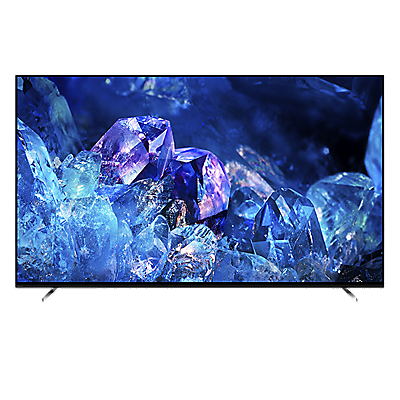
- Gaming Gear
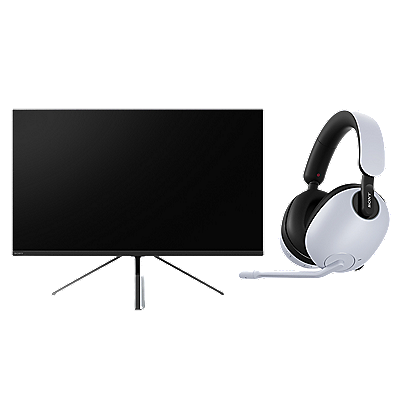
- Cloud Service

- Media, Storage & Cables
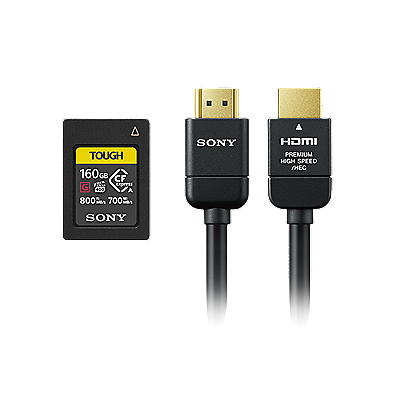
- All Products
- Professional Products & Solutions
- PlayStation
- Support by Sony mobile app
- Sony Group Site
- Sony Design
- Sony Professional
- Sony and the Environment
- Sony Pictures
- Sony Biotechnology
It looks like JavaScript is disabled in your browser. To get the full experience on Sony.co.uk, please change your settings to allow JavaScript.

WX500 Compact Camera with 30x Optical Zoom
red white black
Click to see our best offers
Offers & Promotions
Specifications & Features
- Support & Product Registration

Improve your selfie, and take it easily, too. A 180-degree tiltable LCD monitor makes it simple to see how you look in the frame. Meet the new Sony WX500 — the world’s smallest camera to contain the far-reaching performance of a ZEISS® 30x optical zoom lens. With so much creative capability at hand to shoot for fun, you'll capture more star quality in every image.
The synergy of a higher-performance CMOS image sensor, lightning-quick image processor and legendary lens pack the latest optical and engineering advancements into an amazingly compact form.

The Zeiss® Vario-Sonnar® T* 30x optical zoom lens extends a legacy of high-precision optics to capture clear, sharp, undegraded images throughout a 24–720 mm range.

Legendary ZEISS quality delivers brilliant sharpness, rich contrast and minimal distortion.

A back-illuminated Exmor R CMOS sensor with 18.2 effective megapixels takes in more light for greater detail in every shot.

Now reproducing more realistic detail and colour in images with less diffraction and noise.
Now, it's easier than ever to shoot for a look that you like in selfies, portraits and everything else with the flexibility that a full-tilt LCD monitor, customisable functions and easy photo retouching provide.
The high-resolution LCD monitor on the camera back can be tilted up to 180 degrees, so you can comfortably frame a selfie prior to shooting it or shoot at a low position.
To retouch the appearance of people in photos, you can use Beauty Effect to smooth skin, tone skin, dull overly glistening skin, widen eyes and brighten teeth — all in camera.
Photo Creativity mode lets you alter the appearance of stills and movies with simple, intuitive changes to settings for brightness, colour, vividness and Picture Effect.
Six customisable buttons/keys include the Function button that can be assigned up to 12 frequently used functions, and five buttons/keys that can be assigned one function each.

An improved spatial object detection algorithm realises a more optimal and accurate lens drive to make AF even faster, for capturing more fleeting moments with ease.
Whether you want to share action quickly or save it at a higher resolution for editing, it's simple to make format, mode, exposure and other settings, then start to record.

Record in XAVC S or AVCHD high-resolution movie format and as MP4 file.

Intelligent Active Mode w. 5-axis image stabilisation + frame analysis.
With its high battery capacity, connectivity for mobile sharing and smart, compact design, the Sony WX500 is extraordinarily easy to take and have fun with over the long run, wherever you go.

Hold your power — live long, work hard, stay strong
A full battery lets you take approx. 400 stills or record 75 minutes of movie footage to make sure that you won't miss a good chance to shoot.
Wi-Fi® connectivity with iOS and Android smartphones for remote camera control and still/video sharing is easy. In addition to Wi-Fi® support for connecting to smartphones, NFC technology (near field communication) provides "One-touch connection" to compatible Android smartphones and tablets. Users need only touch devices to connect; no complex set-up is required.

PlayMemories Camera Apps
PlayMemories Camera Apps include free My Best Portrait for adding brightening and softening effects to skin, and sparkling light-catching effects to eyes in selfies and portraits. *Note: Services availability depends on region.

Add skin-softening, skin-brightening and eye catch-light effects.

Use a smartphone to control exposure, release shutter and receive photos.

Transfers photos to a mobile device automatically after powering off.
Pick a camera colour that suits your style: black, white or red.
An optional accessory set of soft body case, lens jacket and shoulder strap (Jacket Case LCJ-HWA available in three colours) keeps the camera in style. The body case doesn’t have to be removed during shooting.

This product is compatible with Final Cut Pro X and iMovie .
Inspirational stories, tips and tricks >
Vlog with Sony >
See the winners >
Discover this year’s virtual exhibition winners, such Tom Oldham, Open Photographer of the Year.
ZEISS® Vario-Sonnar T* 30x optical zoom lens for extra-clear pictures
18.2 MP Exmor R CMOS sensor for higher image quality even when dark
BIONZ X™ image processing engine delivers more detail with less noise
180-degree tiltable LCD for easy framing of selfies/low-position shots
Beauty Effect to retouch people's appearance in stills, by degrees

Help us improve this page
How effective was this page in providing the information you were looking for?
Please share any feedback regarding this page below.
Looking for help? Please contact Customer Support
4.3 based on 397 customer reviews
Related Products

Product Support
- Question & Answers

Get news, support and offers
Search History
- Televisions & Home Theatre

- Gaming Gear
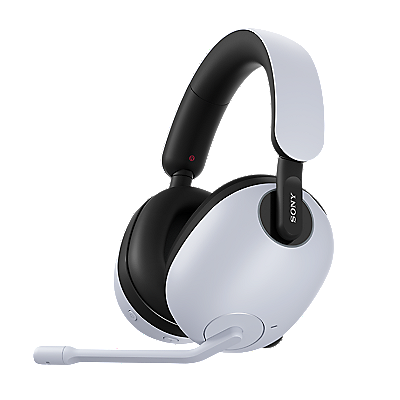
- Cloud Service

- Media, Storage & Cables

- All Products
- Professional Products & Solutions
- PlayStation
- Sony Group Site
- Sony Design
- Sony Professional
- Sony and the Environment
- Sony Pictures
It looks like JavaScript is disabled in your browser. To get the full experience on Sony.co.uk, please change your settings to allow JavaScript.

The WX800 lets you capture the beauty of life around you and share it easily. Whether shooting stills or 4K video, the camera's powerful zoom lens, fast and precise AF and 180° tiltable LCD touch screen ensure that selfies, and even shots at challenging angles, always look their best, and you'll get clear images even with hand-held telephoto shooting.

WX800 Compact High-zoom Camera | 4K Recording
- Offers & Promotions
Specifications & Features

The world's smallest camera with 24-720mm zoom, the WX800 has Fast Intelligent AF and responsive Eye AF to help capture even distant subjects beautifully, while built-in Wi-Fi®/NFC™ makes sharing easy.

With high-magnification ZEISS® Vario-Sonnar T* lens
Despite its compact size the camera offers a broad zoom range, from wide-end 24mm to 720mm telephoto, and with Clear Image Zoom the subject can be magnified while effectively preserving high resolution, at up to 1440mm .

[1] SteadyShot OFF [2] SteadyShot ON
The WX800's sophisticated algorithms and high-performance gyro-sensor work together to compensate for camera shake. This provides a significant reduction in shake even with hand-held shooting at high zoom magnifications.
Zoom Assist enables fast, easy framing of moving subjects at telephoto range. Assign a custom button to this function and, when it’s pressed, the camera will temporarily zoom back out so you can find your subject and quickly reframe.

Advanced imaging technology provides superior image quality in both videos and still shots. From natural-looking portraits to vibrant images even in dim lighting conditions, you'll get beautiful images suited to your shooting conditions.

Advanced image-processing technology delivers high-resolution images with low noise
The back-illuminated Exmor R TM CMOS sensor, with 18.2-megapixel effective resolution, and the advanced BIONZ X TM image-processing system work together to reduce noise at high ISO settings like ISO6400 (expanded). Fine textures are accurately reproduced, and even dimly lit scenes can be beautifully shot. Colour reproduction is also improved, especially for human skin tones.
4K videos (QFHD: 3840 x 2160) recorded with full pixel readout and no pixel binning
The camera records approx. 1.6 times as much information as is required for 4K video output, resulting in outstanding resolution with reduced moiré and jaggies. Videos also accurately reproduce textures and fine details to an extent not possible with full HD.

Please accept Youtube cookies to watch this video
Access your cookie preferences below and make sure to switch on the Youtube cookie under the 'Functional' section.
Speedy AF, combined with 10fps (max.) continuous shooting, helps you keep up with fast-moving subjects, making it easier to capture those decisive action shots.

The WX800's spatial subject detection algorithm and fast lens drive help capture even fleeting moments. The algorithm predicts the focus point, then as the shutter button is half-pressed the AF quickly focuses on the subject.

The Eye AF feature automatically detects and focuses on the eyes of the main subjects. It performs well even under difficult conditions, such as when the subject is looking downward or when faces are backlit or dimly lit.

Shoot continuous images for up to 155 frames
When you're following fast-moving action you'll appreciate the camera's impressive continuous shooting capabilities. Continuously shot images can also be displayed, deleted and protected in groups.
The camera's rotating LCD screen helps you check the composition of self-portrait shots before you shoot, and the One-touch sharing feature lets you transfer photos to your mobile device, for easier sharing with friends.

Touch Focus lets you set the focus simply by touching the monitor. You can also trip the shutter by touching the LCD screen.

The 3.0-type Extrafine LCD screen, with 922k-dot resolution, can be rotated upwards by around 180° so you can quickly check the composition of self-portraits or souvenir photos with friends.

With My Menu, you can register up to 30 menu items for instant recall, and create your own custom menus. You can also delete items and change their order, to build an easy-to-use menu that meets your specific needs.

You can remotely control the camera's shutter, zoom and other operations from a smartphone or tablet device, and also transfer still photos and videos wirelessly. And, using a Bluetooth® connection to your smartphone, it’s even possible to automatically geo-tag your images with your shooting location .

Sony | Photo Gallery
Look at Sony's photo samples

Sony | Camera Channel
View Sony's movie sample

Accessory System chart
See Sony's accessories for cameras
ZEISS® Vario-Sonnar T* 24-720mm zoom lens
4K video recording with full pixel readout
Fast Intelligent AF and Eye AF to instantly capture the moment
180° tiltable LCD touch screen for easy framing of selfie shots
Optical SteadyShot TM for stable, reliable telephoto shooting

What's in the Box
Rechargeable Battery Pack NP-BX1,AC Adaptor,Micro USB cable,Wrist Strap,Instruction Manual
Related Products

Product Support
- Question & Answers
Cameralabs Camera reviews, lens reviews, photography guides
- Canon camera reviews
- Fujifilm camera reviews
- Nikon camera reviews
- Olympus camera reviews
- Panasonic camera reviews
- Sony camera reviews
- All Camera reviews
- Canon lenses
- Fujifilm lenses
- Nikon lenses
- Olympus lenses
- Panasonic lenses
- Samyang lenses
- Sigma lenses
- Sony lenses
- Tamron lenses
- Zeiss lenses
- Best mirrorless camera
- Best point and shoot
- Best vlogging camera
- Best superzoom camera
- Best waterproof camera
- Best Camera Gifts and Accessories
- Best Canon Lenses
- Best Nikon Lenses
- Best Fujifilm lenses
- Best Micro Four Thirds Lenses
- Best Sony lenses
- All Lens reviews
- Buy Gordon a coffee!
- Gordon’s In Camera book!
- Shop at B&H
- Shop at Adorama
- Cameralabs merch!
- Rent gear from Borrow Lenses
Best superzoom camera 2023
If you’re shopping for a superzoom camera, you’ve come to the right place! At Camera Labs I write in-depth reviews of cameras but understand you’re busy people who sometimes just want recommendations of the most outstanding products. So here I’ll cut to the chase and list the best superzoom cameras around right now. Note like my other guides they’re also listed by review date, not in order of preference.
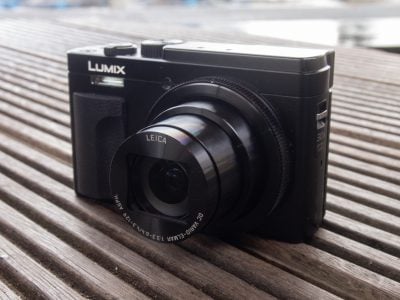
Panasonic Lumix TZ95 ZS80 review
Check prices on the Lumix TZ95 / ZS80 at Amazon , B&H , Adorama , or Wex . Alternatively get yourself a copy of my In Camera book or treat me to a coffee! Thanks!
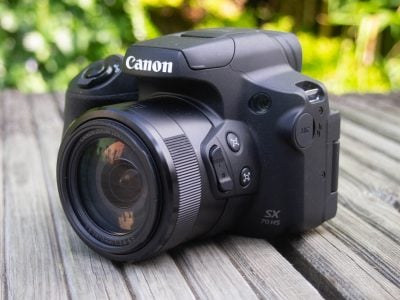
Canon SX70 HS review
Check prices on the Canon SX70 HS at B&H , Amazon , Adorama , or Wex . Alternatively get yourself a copy of my In Camera book or treat me to a coffee! Thanks!
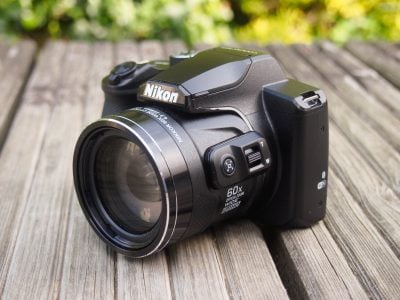
Nikon COOLPIX B600 review
Check prices on the Nikon COOLPIX B600 at Amazon , B&H , Adorama , or Wex . Alternatively get yourself a copy of my In Camera book or treat me to a coffee! Thanks!
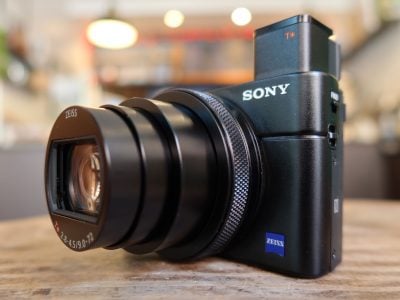
Sony RX100 VII review
Check prices on the Sony RX100 VII at B&H or WEX . Alternatively get yourself a copy of my In Camera book or treat me to a coffee! Thanks!
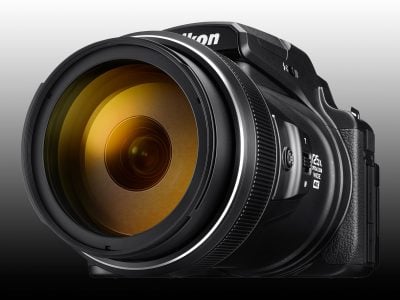
Nikon COOLPIX P1000 review
Check prices on the Nikon COOLPIX P1000 at Amazon, B&H , Adorama , or Wex . Alternatively get yourself a copy of my In Camera book or treat me to a coffee! Thanks!
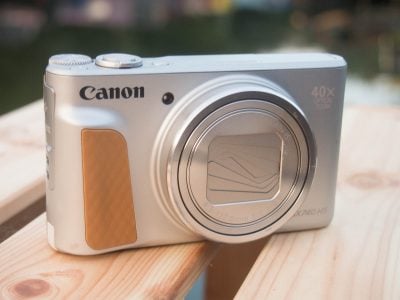
Canon SX740 HS review
Check prices on the Canon SX740 HS at Amazon , B&H , Adorama , or Wex . Alternatively get yourself a copy of my In Camera book or treat me to a coffee! Thanks!
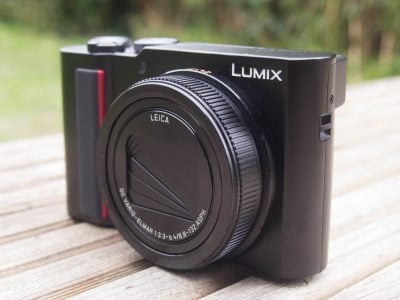
Panasonic Lumix TZ200 ZS200 review
Check prices at Amazon , B&H , Adorama , or Wex . Alternatively get yourself a copy of my In Camera book or treat me to a coffee! Thanks!
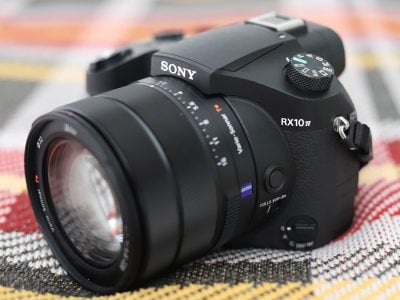
Sony RX10 Mark IV review
Check prices on the Sony RX10 Mark IV at Amazon , B&H , Adorama , or Wex . Alternatively get yourself a copy of my In Camera book or treat me to a coffee! Thanks!
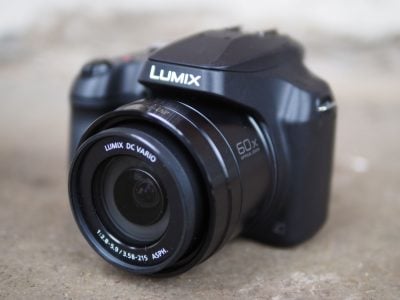
Panasonic Lumix FZ80 / FZ82 review
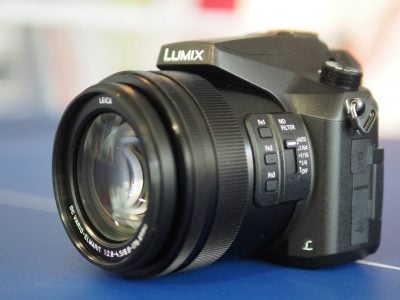
Panasonic Lumix FZ2000 / FZ2500 review
[ Check prices at Amazon , B&H , Adorama , or Wex . Alternatively get yourself a copy of my In Camera book or treat me to a coffee! Thanks!

Like my reviews? Buy me a coffee!
In Camera by Gordon Laing
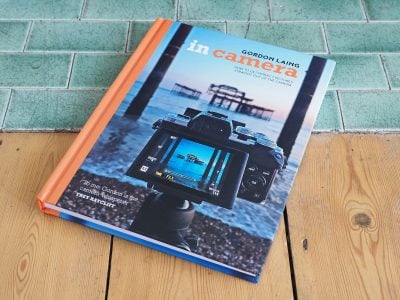
Buy it at Amazon!
More Camera Labs
- Camera reviews
- Cameralabs Photography Podcast
Buyers’ Guide
- Best Point and Shoot camera 2023
- Best DSLR 2023
- Best waterproof camera 2022
- Best Fujifilm lenses 2023
- Best Micro Four Thirds Lenses 2023
- Best Sony lenses 2023
Manufacturers
- Fujifilm gear
- Olympus gear
- Panasonic gear
- Accessories
About Camera Labs
- About Gordon Laing
- Support Camera Labs
- Gordon’s In Camera book
- Buy a Cameralabs T-Shirt
- Photography eBooks
Follow Gordon Laing
All words, images, videos and layout, copyright 2005-2022 Gordon Laing. May not be used without permission. As an Amazon Associate I earn from qualifying purchases.
Website design by Coolgrey
- Reviews TV REVIEWS v1.11 HEADPHONES REVIEWS v1.7 MONITOR REVIEWS v2.0 SOUNDBAR REVIEWS v1.3 MOUSE REVIEWS v1.5 KEYBOARD REVIEWS v1.3.1 PRINTER REVIEWS v1.2 VACUUM REVIEWS v1.3 PROJECTOR REVIEWS v0.9 TOASTER REVIEWS v1.0 BLENDER REVIEWS v1.0 AIR PURIFIER REVIEWS v1.0 KEYBOARD SWITCH REVIEWS v1.0 SPEAKER REVIEWS v0.8 CAMERA REVIEWS v0.12.1 LAPTOP REVIEWS v0.8.2
- In Progress
- Newsletters
Sony RX100 VII Camera Review

The Sony RX100 VII is a versatile compact zoom camera. It offers good overall image quality for its class and features an effective autofocus system. It's also incredibly lightweight and portable, making it easy to bring with you throughout the day. Depending on your choice of settings and usage habits, its battery life is also on the short side, and its lack of a handgrip, small size, and smooth-finish body makes it tricky to maintain a secure hold.
Our Verdict
The Sony RX100 VII is good for travel photography. Image quality out-of-the-box is good for its class, and its autofocus system does a good job of tracking moving subjects and objects. Unfortunately, the camera's small size and lack of a dedicated hand grip can make it feel somewhat cramped in the hand, but it's an incredibly portable camera that you can bring almost anywhere your travels take you. That said, its battery life is quite limited, so you might need an extra battery.
- Remarkably compact and lightweight.
- Good overall autofocus system.
- Good image quality for its class.
- Lacking in ergonomics.
- Short battery life.
The Sony RX100 VII is okay for landscape photography. Image quality is good for its class, with a fair dynamic range and decent sharpness. It also has an in-camera HDR shooting mode that allows you to capture a broader range of detail in high-contrast environments. That said, it still can't capture as much detail or dynamic range as a camera with a larger sensor would. Also, while the camera feels decently sturdy, it isn't rated as weather-sealed, and its compact size makes it somewhat uncomfortable to hold.
- Tilting screen is bright and sharp.
- Not weather or impact-resistant.
The Sony RX100 VII is decent for sports and wildlife photography if you need something compact. It has a fairly effective autofocus system for its class, as well as blackout-free burst shooting. The stacked design of its sensor also allows for a very quick max burst rate. Plus, it captures good image quality for its sensor size, and its built-in Zeiss lens has a fairly long maximum focal length, making it easy to capture photos of far-away subjects. Unfortunately, its small size can make it feel somewhat cramped in the hand.
- Very quick max burst rate.
The Sony RX100 VII has unremarkable RAW photo performance, but it's still good for its class. Its noise handling is middling, so it isn't well-suited to low-light conditions. Its dynamic range is also mediocre, so the range of detail will be limited in high-contrast scenes. However, its sensor has a fairly high resolution for its size, so images look reasonably sharp and detailed.
- Relatively high resolution captures crisp images.
- Disappointing noise performance in low light.
The Sony RX100 VII is decent for vlogging, though this isn't its intended use. Its tilting screen can flip all the way up to face you, allowing you to monitor yourself as you record, and the camera's lightweight construction makes it easy to carry around, even for long shooting sessions. Its autofocus system also does an excellent job of tracking faces, ensuring you stay in focus. Video quality is reasonably sharp and detailed as long as you record well-lit environments. On the downside, depending on your usage habits and choice of settings, its battery drains quite quickly. It also overheats very easily when shooting in 4k.
- Good overall video stabilization performance.
- Mediocre video quality in dim environments.
- Overheats fairly easily, especially in 4k.
The Sony RX100 VII isn't intended for studio video. Video quality is okay overall, though footage recorded in FHD and 4k can look a little soft and noisy in poorly lit environments. Its menu system is also somewhat hard to navigate. Out-of-the-box, the camera only records 4k video in five-minute increments, but this extends to 30 minutes if you change its 'Auto Power OFF Temp.' setting to 'High.' However, using it this way can result in the camera overheating, though it can also overheat during shorter recording sessions. Thankfully, its autofocus system is very effective at tracking moving subjects in video. The camera also supports Log shooting profiles, yielding a wider dynamic range while recording video and greater flexibility when color-grading your footage, though its internal recording capability isn't really suited to advanced video work, limiting how much you'll actually get out of using Log format.
- Includes Log picture profile.
The Sony RX100 VII isn't designed for action video. While it's small, lightweight, and decently sturdy, it isn't meant for mounting on a chest or a helmet rig, and the camera isn't rated as water or impact-resistant. It's also incapable of shooting at more than 30 fps in 4k, which isn't conducive to recording smooth action video, but it can record at up to 120 fps in FHD. It also does a good job of smoothing out camera shake overall.
- 7.3 Travel Photography
- 6.8 Landscape Photography
- 7.2 Sport & Wildlife Photography
- 6.3 Raw Photo Performance
- 7.3 Vlogging
- 6.8 Studio Video
- 5.2 Action Video
- Updated Apr 22, 2024: We updated the review's 'Our Verdict' section, including the Pros/Cons, to match the camera's current scores and more accurately reflect its performance.
- Updated Feb 21, 2024: Added mention of the RICOH GR IIIx in the 'Differences Between Variants' section.
- Updated Jan 29, 2024: Added text to the 'Raw Photo Performance' verdict box.
- Updated Jan 29, 2024: Converted to Test Bench 0.12.1 .
- Updated Jul 21, 2023: Added a link to the Sony ZV-1 II in the 'Screen' box.
- Updated May 29, 2023: Added a link to the Leica D-Lux 7 to the 'Body' section.
- Updated Apr 05, 2023: Converted to Test Bench 0.12 .
- Updated Jan 23, 2023: Converted to Test Bench 0.11 .
- Updated Sep 16, 2022: Converted to Test Bench 0.10 .
- Updated Aug 05, 2022: Converted to Test Bench 0.9 .
- Updated Apr 22, 2022: Converted to Test Bench 0.8 .
- Updated May 18, 2021: Review published.
- Updated May 14, 2021: Early access published.
- Updated Apr 16, 2021: Our testers have started testing this product.
- Updated Apr 16, 2021: The product has arrived in our lab, and our testers will start evaluating it soon.
Differences Between Sizes And Variants
The Sony RX100 VII only comes in one color variant: Black. You can see its label here .
Let us know if you encounter another variant, and we'll update our review.
Compared To Other Cameras
The Sony RX100 VII and the RICOH GR III are both excellent premium compact cameras, but they're aimed at different users. The Sony is more of an all-arounder, with a versatile zoom lens, tilting screen, pop-up EVF, and better video capabilities. Conversely, the RICOH is aimed more at street photographers and enthusiasts who care about image quality. It uses a larger sensor with better dynamic range and low-light performance and a prime lens, but otherwise, it lacks some of the frills and extras found on the Sony, with no viewfinder, no tilt-out screen, and very limited video features.
The Fujifilm X100V and the Sony RX100 VII are both premium point-and-shoot cameras. The Fujifilm is a little better overall, but each camera has different strengths and weaknesses. The Fujifilm has a larger APS-C sensor that results in better image quality and uses a fixed focal length prime lens, while the Sony is more compact and has a more versatile zoom lens. While the Sony has a better autofocus system and faster burst rate, the Fujifilm has a much better hybrid viewfinder that makes it easier to frame your shots, along with better battery life overall.
The Sony RX100 VII and the RICOH GR IIIx are both excellent premium point-and-shoots, though they're aimed at different uses. Both are extremely portable, but the Sony uses a 1-inch type sensor and a zoom lens, while the RICOH uses a larger APS-C sensor and a fixed focal-length lens. The RICOH is better for street photographers and enthusiasts who prioritize image quality and prefer to shoot at fixed focal lengths. In contrast, the Sony is more of an all-around point-and-shoot, as its zoom lens allows for more flexible framing, and it offers extra features like 4k recording and a tilting screen.
The Sony RX100 VII and the Sony ZV-1 are very similar compact cameras. They share a similar 20MP 1-inch sensor, use the same battery, and both have fantastic autofocus systems, as well as being similar in size and weight. That said, the ZV-1 is geared more specifically to vloggers, with a fully articulated screen, specialized focus modes, and small hand bump that makes it easier to hold securely when the camera's facing you. The RX100 VII, on the other hand, has a small pop-up viewfinder, tilting screen, and a built-in flash. Its built-in lens also has a longer focal length range, giving it a bit more versatility. Otherwise, the two cameras perform very similarly.
The Sony RX100 VII and the Leica D-Lux 7 perform fairly similarly overall. While the Leica has a larger sensor and is better suited for low-light situations, the Sony is more portable, has a more reliable autofocus system, and has a longer zoom range. However, it does have a worse battery life.
Test Results

- Made of smooth-finish metal
- Most buttons are small but offer good physical feedback, except for the Record button, which is easy to accidentally press on
- Customizable lens ring rotates smoothly
- Pop-up viewfinder is sturdy
- Screen mechanism feels solid
- Back dial is a little loose, which can make it easy to skip past a setting or incremental adjustment
- Zoom dial is sensitive, making it hard to fine-tune focal length
- Edges of the mode dial are sharp to the touch, which can make it uncomfortable to spin
- Pop-up flash is a little fragile but is easy to push back into its housing
- Input and outputs are covered by hard plastic flaps
- SD card and battery compartment is covered by a solid locking hinged door

If you'd prefer a point-and-shoot with more physical control dials, check out the Leica D-Lux 7 .

- Sony RX100 VII camera
- Wrist strap
- Strap adapter
- 1x Sony Np-BX1 battery
- USB charger
- Startup Guide

- Lack of a grip at the front of the camera and smooth finish makes it difficult to keep a secure hold
- Back of the camera does have a rubberized thumb grip, but it's quite small
- Its small size makes it slightly uncomfortable to use even for users with small hands
- Pop-out viewfinder isn't comfortable to press your eye against, but is a useful feature
- Lens dial is useful, but not particularly responsive
- Can't use the touchscreen to adjust most parameters
- Memory card can't be changed when the camera is mounted on a tripod

If you'd prefer a compact camera with a fully articulated screen, check out the Sony ZV-1 II .

- Most functions are difficult to find within the menu system, with quite a few settings being buried within sub-menus
- Menu can only be navigated with the physical click wheel, which is somewhat unintuitive
- Interface is a little more intuitive when using the Tile Menu
- Guide mode is useful in explaining some core functions
- Lens dial, back wheel, and some buttons can be remapped to better-suit your ergonomic preferences
- Fn sub-menu can be extensively customized, and you can setup your own custom menu too

If you'd prefer a similarly portable camera with a larger sensor, check out the RICOH GR III or RICOH GR IIIx , both of which use APS-C sensors.
Note: Out-of-the-box, this camera records 4k video in 5-minute intervals to protect against overheating, but this limit can be extended to 30 minutes if you change its 'Auto Power OFF Temp.' setting to 'High'.
Note: This camera features a single burst shooting mode that allows it to capture seven shots at speeds of 30 fps, 60 fps, or 90 fps to capture clear stills of quick moments. However, we don't currently evaluate the performance of this feature.

Note: This camera needed to have its aperture set to f/10.0 to maintain a stable shutter speed of 1/2000 when shooting at ISO 12800. This differs from the standard test methodology, in which aperture is set to f/8.0, so test results at ISO 12800 may not be fully comparable with other cameras.

Note: This camera's 'Subject Detection' mode can be configured to track people or animals, like a cat or dog. This camera can also only record 4k video at 30 fps with a bitrate of 50 mb/s, which differs from the standard test parameters of having a bitrate of 100 mb/s.

Note: This camera can record for a maximum of five minutes when recording at 120fps.


Should You Bring a Camera When You Travel or Is a Phone Enough?
F or most travelers, the smartphone in your pocket works just fine for taking photos of adventures. But what are you missing by relying on your phone alone? I used my recent trip to Germany to explore when a casual sightseer would benefit from having a dedicated camera or if their phone would be enough.
While everyone's kit is different, most travelers won't be hauling around a DSLR or pro-quality mirrorless camera. Instead, they'll debate between buying a fancy new phone or a more affordable everyday mirrorless camera. (Though there are point-and-shoot options if you want a standalone camera, they may not outstrip your phone's photo capabilities.)
I'm no pro photographer, so don't expect expert advice on how to get the most out of this kit, but for casual photo takers who leave their camera on the auto settings, this is a good comparison to see what each device can handle without much fuss amid a busy trip abroad.
My kit isn't the best you'll find, but it's probably not far off from what many travelers may pack in their pockets and bags: my personal iPhone 12 Pro, a Samsung Galaxy S22 Ultra (to test a more camera-intensive phone), and a snug Sony ZVE-10 mirrorless camera with a Sigma 16mm f1.4 DC DN (an affordable prime lens).
Here's the breakdown for what each device did best -- and what they couldn't do.
iPhone 12 Pro
The iPhone 12 Pro is a few years past its October 2020 launch date but still plenty capable, and its photo capabilities are probably similar to what many older premium and newer cheaper phones can achieve. When it debuted, the iPhone 12 Pro retailed for $999 (£999, AU$1,699) but years later it isn't really sold anywhere aside from refurbished at sub-$500 prices. You can still pick up a stock iPhone 12 on Apple's website for $599, but it lacks the 2x telephoto lens.
The iPhone 12 Pro took basic photos well, albeit with the warm tones typical of iPhone photos. Images I shot didn't have quite the same color accuracy as the Samsung S22 Ultra or the Sony ZVE-10. Still, the iPhone 12 Pro was great at taking daytime shots of streets, museums and breezy lunches. It struggled with dimly lit dinners and at night, with photos having a grainy texture from image noise.
Germany Travel Photo Comparison: iPhone 12 Pro Example Photos
Another limit was the iPhone 12 Pro's 2x optical zoom, which was far inferior to the Samsung Galaxy S22 Ultra's telephoto capabilities. Since I was mostly seeing landscapes, I rarely felt the need to zoom in on a distant subject. The ultra-wide camera was more useful, and its 13mm-equivalent focal length allowed me another option to the 26mm-equivalent main camera for framing a specific shot.
In head-to-head comparisons with the mirrorless camera, the iPhone 12 Pro held up surprisingly well. The phone captured near and background distant subjects in crisp detail. The mirrorless camera was more selective in its focus, largely homing in on one or the other and requiring a bit more finesse.
As I was using the iPhone for every other travel-necessary app like navigation and wireless payments, it was in my pocket every day and wasn't a burden to carry. That meant it was on-hand for me to take quick photos out the windows of our train or rental car of passing scenery at just the right time.
Samsung Galaxy S22 Ultra
While superseded by this year's Samsung Galaxy S23 Ultra, the Samsung Galaxy S22 Ultra I took on my trip is still a camera powerhouse. It has a 108-megapixel main camera and a 12-megapixel ultrawide camera with 120-degree field of view, but it's really known for its zoom photography. It has not one but two telephoto lenses: a 10-megapixel with 3x optical zoom and a 10-megapixel periscope-style capable of 10x optical zoom.
As expected, the Galaxy S22 Ultra took great photos at a distance. Did I need zoom photo capability? Not really! Most of my subjects were 20 to 50 feet away.
Unless, of course, you're taking shots of distant buildings, like the Neuschwanstein Castle on Germany's southernmost border, nestled in the foothills of the Alps within spitting distance of Austria. It was nice to have more control to frame the photos with the zoom capability, even if I didn't need the 100x "space zoom." The feature combines optical and digital zoom with AI tricks to home in on a cropped-in corner of zoomed-in image. The 30x was enough and rarely necessary. Regardless, the S22 Ultra's 10x optical and digital hybrid zoom produced far better photos than the iPhone 12 Pro's grainy 10x digital zoom.
Here's the Samsung Galaxy S22 Ultra's camera from the road at the foot of a trail leading up to Neuschwanstein, with shots from the main camera at 1x, 3x, 10x and 100x zoom.
Germany Travel Photo Comparison: Samsung S22 Galaxy Ultra, Castle Street
Compare that to the iPhone 12 Pro's main camera at 1x, 2x and 10x.
Germany Travel Photo Comparison: iPhone 12 Pro, Castle Street
The Galaxy S22 and iPhone 12 Pro both did a decent job shooting photos with a mixture of dark and light foregrounds and backgrounds, especially with bright skies that can be easily washed out. Below is a shot from up on a balcony of the Neuschwanstein castle, looking west into the valley.
But it's easy to see how cool the Galaxy S22 Ultra's zoom capabilities are when perched above the landscape and using successive zoom intervals to get closer shots of a subject.
Germany Travel Photo Comparison: Samsung Galaxy S22 Ultra, Valley Zoom
Lastly, here's a simple comparison of shots of the castle itself, with the Galaxy S22 Ultra's main camera versus the iPhone 12 Pro's camera.
The Galaxy S22 Ultra is one of the best phones we've tested, which garnered a CNET Editor's Choice Award in our review . It's more convenient to handle than my mirrorless camera, though it doesn't have as many photo settings.
The Galaxy S22 Ultra is a large phone, so it took up a lot of space in my pocket. Even if I were to buy it to replace my iPhone 12 Pro, it would still be cumbersome to yank out for casual photos. As it was, there were a handful of situations where I might have lost the S22 if it had been in my pocket instead of the smaller iPhone 12 Pro, including a bobsled-like roller coaster on a hillside in the middle of the Black Forest. (Which, sadly, wouldn't allow phones on the course, but there are ride-through videos on YouTube .)
Sony ZVE-10 mirrorless camera
The Sony ZVE-10 is aimed at vloggers with its 4K video shooting and light weight, but that also made it great for taking still photos with its 24-megapixel resolution. The camera is reasonably affordable at $700, and has swappable lenses via a lens mount.
I used the ZVE-10 with a Sigma 16mm f/1.4 prime lens I picked up for $399 to take better product shots. The Sony body and Sigma lens combo took superior photos to either phone in medium to close range. Thanks to the ZVE-10's crop APS-C sensor, the 16mm lens was more like a 24mm lens, and had essentially the same field of view as the standard rear cameras on the iPhone 12 Pro and Galaxy S22 Ultra.
For the majority of the trip, the short-range prime lens was fine, and I didn't miss being able to zoom in on distant objects. You can get pretty close to any subject that's worth taking photos of, though I would want a telephoto lens at a concert or for shooting wildlife. I did miss not being able to zoom out with either phone's ultra-wide lenses, especially in cramped quarters like awkwardly small museum rooms.
The ZVE-10 performed fine with landscape shots but excelled in reasonable-size enclosed spaces, capturing greater color contrast and lighting/shadow variance. Compare these photos below of a fresco on a low roof in the Cologne Cathedral, shot with the ZVE-10 and the iPhone 12 Pro, respectively.
When shooting close subjects, the ZVE-10 excelled at capturing evocative lighting, and the f/1.4 Sigma lens' natural bokeh led to moodier shots compared to the uniform brightness of the iPhone 12 Pro.
And while the iPhone 12 Pro produced uniformly brighter and crisper photos, the post-processing to get such clarity led to some flattened color and shadow. In photos of this iron statue of the Chinese mythological aquatic monkey demon Wuzhiqi located in Berlin's Humboldt Forum, you can see more detail in the iPhone 12 Pro's shot, but it loses the red-brown tone from years of oxidation.
It was also easier to get the ZVE-10 to produce a depth effect naturally. With the iPhone 12 Pro, portrait mode requires more fiddling and an ideal distance between the phone, your subject and the background. But the camera's depth effect made it tough to keep everything in focus when I was taking photos of food and wanted to show the whole plate.
Unsurprisingly, the ZVE-10 and lens far outweighed the phones. Though not enough to be cumbersome, the weight and size differences are noticeable. The camera and lens fit snugly in my compact camera bag, which stayed out of the way while slung over my shoulder. But the camera was more annoying to lug around and pull out to take photos than a phone in my pocket.
Needing to manually upload my photos was a bit annoying, too. The Sony Imaging Edge app let me send photos directly from the camera to my phone, but it's clunky for bulk uploads. And forget about handing your fancy mirrorless camera over to a stranger to take a photo of your traveling party for fear of them dropping it or not knowing how to use it. Thankfully, the ZVE-10's rotating display meant I could angle it forward to pull off selfies, which consequently took better shots than either phone's front-facing camera but didn't capture as much subject matter. Both the iPhone's and Galaxy's selfie cameras had wider field-of-views.
Lastly, the mirrorless camera may have more potential for better shots since it can save images in the RAW format, which gives photo editors a lot more data and freedom to tweak. It's worth pointing out that my iPhone 12 Pro can shoot in Apple's ProRAW format , while my Samsung Galaxy S22 Ultra can shoot in Expert RAW format via a separate app (though it's natively in the camera app as of the Samsung Galaxy S23 series). Both can be edited much like standard RAW formats. I deliberately shot photos in JPG format for all devices in this test, since most travelers will simply point and shoot with the default format. All these photos could certainly look better with some Photoshop touch-up.
Ultimately, this was an unscientific test rather than a thorough field guide. I set out wondering whether my daily smartphone would miss out on any particular travel shots that a camera-focused phone like the Samsung Galaxy S22 Ultra or my mirrorless camera would be capable of picking up.
Most of the time the iPhone was fine, but there were edge cases where the S22 Ultra and ZVE-10 outperformed my older iPhone. And as I am not an especially gifted photographer, I acknowledge that someone with real skills could finesse far better images out of either the Galaxy S22 Ultra or the ZVE-10 that could likely put the iPhone to shame in all situations.
Also, your mileage will vary depending on which kinds of photos you want to take. If you absolutely need to zoom in on distant subjects, a phone like the S22 Ultra is the right choice -- or you could buy a telephoto lens for your mirrorless camera.
But from citywide landscapes to museum art piece shots to selfies, the iPhone 12 Pro handled nearly everything I needed it to do. It also helped that I could effortlessly post my photos on social media from my main phone rather than having to transfer them from the mirrorless camera. That's essential to the travel experience, as I'd add a photo to my Instagram story and get friends responding in minutes with recommendations for historical monuments and food in my area. And it's not like my mirrorless camera could make calls or text.
This isn't necessarily an iPhone recommendation, just reiterating that your daily driver will be just as useful while traveling as it is at home (but better cameras and a quality ultra-wide lens certainly help). The shots you'll take of yourself and peripatetic partners will mostly be 10 to 20 feet away in bright daylight and low light, with some night scenes here and there. Perhaps a higher-end camera would capture more artistic and high-quality depth shots, but you'll probably want to capture the fleeting and low-key moments more than the artfully posed ones.
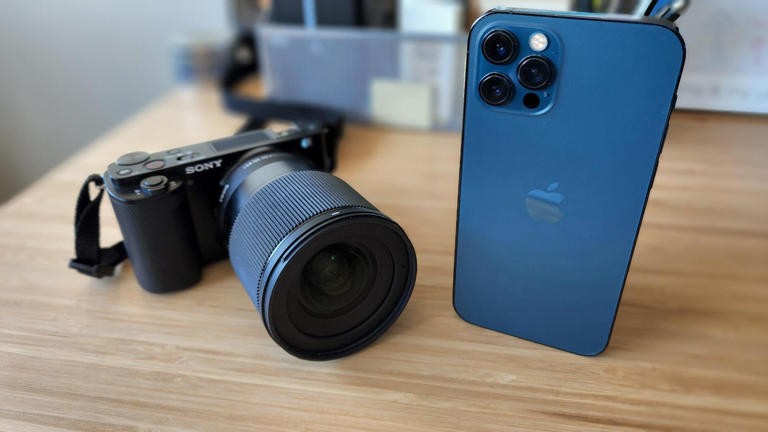

- Bahasa Indonesia
- Eastern Europe
- Moscow Oblast
Elektrostal
Elektrostal Localisation : Country Russia , Oblast Moscow Oblast . Available Information : Geographical coordinates , Population, Area, Altitude, Weather and Hotel . Nearby cities and villages : Noginsk , Pavlovsky Posad and Staraya Kupavna .
Information
Find all the information of Elektrostal or click on the section of your choice in the left menu.
- Update data
Elektrostal Demography
Information on the people and the population of Elektrostal.
Elektrostal Geography
Geographic Information regarding City of Elektrostal .
Elektrostal Distance
Distance (in kilometers) between Elektrostal and the biggest cities of Russia.
Elektrostal Map
Locate simply the city of Elektrostal through the card, map and satellite image of the city.
Elektrostal Nearby cities and villages
Elektrostal weather.
Weather forecast for the next coming days and current time of Elektrostal.
Elektrostal Sunrise and sunset
Find below the times of sunrise and sunset calculated 7 days to Elektrostal.
Elektrostal Hotel
Our team has selected for you a list of hotel in Elektrostal classified by value for money. Book your hotel room at the best price.
Elektrostal Nearby
Below is a list of activities and point of interest in Elektrostal and its surroundings.
Elektrostal Page

- Information /Russian-Federation--Moscow-Oblast--Elektrostal#info
- Demography /Russian-Federation--Moscow-Oblast--Elektrostal#demo
- Geography /Russian-Federation--Moscow-Oblast--Elektrostal#geo
- Distance /Russian-Federation--Moscow-Oblast--Elektrostal#dist1
- Map /Russian-Federation--Moscow-Oblast--Elektrostal#map
- Nearby cities and villages /Russian-Federation--Moscow-Oblast--Elektrostal#dist2
- Weather /Russian-Federation--Moscow-Oblast--Elektrostal#weather
- Sunrise and sunset /Russian-Federation--Moscow-Oblast--Elektrostal#sun
- Hotel /Russian-Federation--Moscow-Oblast--Elektrostal#hotel
- Nearby /Russian-Federation--Moscow-Oblast--Elektrostal#around
- Page /Russian-Federation--Moscow-Oblast--Elektrostal#page
- Terms of Use
- Copyright © 2024 DB-City - All rights reserved
- Change Ad Consent Do not sell my data
Tamron unveils its most versatile zoom lens ever for Sony full-frame cameras – and it looks perfect for travel
The 50-300mm f/4.5-6.3 has more reach and closer focusing

Tamron just added its most versatile zoom lens for Sony E-mount cameras to its growing lens line up: the 50-300mm f/4.5-6.3 Di III VC VCD. It's a full-frame lens for cameras such as the Sony A7 IV , although you can pair it with an APS-C camera like the Sony A6700 and further extend that impressive zoom range to 75-450mm.
It offers a little extra reach at the wide end over Tamron's popular 70-300mm f/4.5-6.3 from 2020, plus it boasts better close focusing capabilities, with up to half life size macro at the 50mm wide end.
These two feats are achieved without increasing the overall lens size and weight by much at all, although the price of Tamron's latest zoom has snuck up by around 25% over the 70-300mm – the 50-300mm costs $799 / £819 (Australia pricing TBC).
For most people it's a price worth paying given the added versatility, plus it's worth knowing that Sony's own lenses are typically about twice the price of Tamron's. The closest Sony-own alternative is the FE 70-300mm F4.5-5.6 G OSS, which costs another 25% over the 50-300mm.
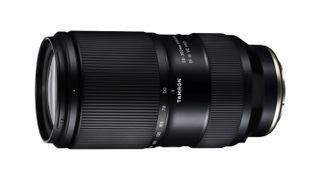
If all you want on the road is a camera and one lens, the 50-300mm is a compelling option, ably covering scenarios that your camera phone might struggle with, ranging from portraits to macro and distant sites of interest.
We don't get quite the versatility as the recently announced and bulkier Nikon 28-400mm lens , the Tamron lens is impressively compact, measuring just 5.9in / 150mm, while it only weighs 23.5oz / 665g – making it the right fit with Sony's mirrorless cameras.
It's also a robust moisture-resistant lens equipped with optical image stabilization, which Tamron calls Vibration Compensation (VC), and a linear motor for quick and quiet autofocus – that's the VXD (Voice-coil eXtreme-torque Drive) in the lens' full name.
Get daily insight, inspiration and deals in your inbox
Sign up for breaking news, reviews, opinion, top tech deals, and more.

Minimum focus distance is just 8.66in / 0.22m with the lens at its wide 50mm setting, while at 300mm it's 35.4in / 0.9m, which results in a maximum 1:3 magnification ratio – about one third life size.
Tamron's latest lens is due to be available from June 27 just in Sony E-mount. There's no word at the moment if it will be made available in other lens mounts – although if the 70-300mm lens is anything to go by, there's hope for a Nikon Z-mount version.
The 50-300mm could be one of the best Sony lenses available for three-digits, especially for people looking for the one lens that picks up where their cameraphone naturally finds its limit. You get an impressive zoom range and close focusing capabilities, all in a lens that appears a decent fit with Sony cameras.
You might also like
- Best Sony lenses 2024: top lenses for Sony mirrorless cameras
- Sony’s new 16-25mm is its lightest and smallest ever ultra-wide f/2.8 zoom lens, but it comes with a catch
- Nikon just launched the world’s most versatile zoom lens for its full-frame cameras
Tim is the Cameras editor at TechRadar. He has enjoyed more than 15 years in the photo video industry with most of those in the world of tech journalism. During his time as Deputy Technical Editor with Amateur Photographer, as a freelancer and consequently editor at Tech Radar, Tim has developed a deeply technical knowledge and practical experience with cameras, educating others through news, reviews and features. He’s also worked in video production for Studio 44 with clients including Canon, and volunteers his spare time to consult a non-profit, diverse stories team based in Nairobi. Tim is curious, a keen creative, avid footballer and runner, and moderate flat white drinker who has lived in Kenya and believes we have much to enjoy and learn from each other.
OM System M.Zuiko Digital 150-600mm F5.0-6.3 IS review: double your reach
I tried out the new Canon RF 35mm F1.4 – and it's the multi-purpose prime pros have been waiting for
OM System OM-1 II review: the pint-sized powerhouse
Most Popular
- 2 Our favorite cheap Bluetooth speaker maker has released a JBL Flip 6 rival, but it's half the price
- 3 “Everybody walks wrong” – This walking expert gives four tips to help improve your posture and age-proof your body
- 4 The Northern Lights could return this week – 5 ways to plan your photo shoot
- 5 US government warns on critical Linux security flaw, urges users to patch immediately
- 2 Apple users are being targeted by MFA bombings - here’s how to stay safe with Avast One
- 3 Spotify announces price hike, right after CEO enrages music fans by claiming the cost of creating 'content' is 'close to zero'
- 4 I tested Siri against Gemini and Bixby in 25 challenges, and one body-slammed the others – hint, it wasn’t Apple
- 5 Netflix is leaving your older Apple TV
Current time by city
For example, New York
Current time by country
For example, Japan
Time difference
For example, London
For example, Dubai
Coordinates
For example, Hong Kong
For example, Delhi
For example, Sydney
Geographic coordinates of Elektrostal, Moscow Oblast, Russia
City coordinates
Coordinates of Elektrostal in decimal degrees
Coordinates of elektrostal in degrees and decimal minutes, utm coordinates of elektrostal, geographic coordinate systems.
WGS 84 coordinate reference system is the latest revision of the World Geodetic System, which is used in mapping and navigation, including GPS satellite navigation system (the Global Positioning System).
Geographic coordinates (latitude and longitude) define a position on the Earth’s surface. Coordinates are angular units. The canonical form of latitude and longitude representation uses degrees (°), minutes (′), and seconds (″). GPS systems widely use coordinates in degrees and decimal minutes, or in decimal degrees.
Latitude varies from −90° to 90°. The latitude of the Equator is 0°; the latitude of the South Pole is −90°; the latitude of the North Pole is 90°. Positive latitude values correspond to the geographic locations north of the Equator (abbrev. N). Negative latitude values correspond to the geographic locations south of the Equator (abbrev. S).
Longitude is counted from the prime meridian ( IERS Reference Meridian for WGS 84) and varies from −180° to 180°. Positive longitude values correspond to the geographic locations east of the prime meridian (abbrev. E). Negative longitude values correspond to the geographic locations west of the prime meridian (abbrev. W).
UTM or Universal Transverse Mercator coordinate system divides the Earth’s surface into 60 longitudinal zones. The coordinates of a location within each zone are defined as a planar coordinate pair related to the intersection of the equator and the zone’s central meridian, and measured in meters.
Elevation above sea level is a measure of a geographic location’s height. We are using the global digital elevation model GTOPO30 .
Elektrostal , Moscow Oblast, Russia

IMAGES
VIDEO
COMMENTS
9 Best Sony Cameras for Travel: A comprehensive guide to buying Sony Mirrorless Cameras that suit different budgets and travel styles. ... Check out: 18 Best Sony Zoom Lenses to Buy in 2024. The Sony Vlogging Cameras (ZV-1 - ZV-E10) This is a new series of cameras Sony is releasing, emphasizing vlogging features such as product/person priority ...
Best Mid-Range Compact Camera For Travel. If you want to save money, the Canon PowerShot G7 X Mark III is a great mid-range option. Like other Canon cameras, its user interface is highly intuitive. It has a comfortable finger grip and thumb rest, and the tilt-out screen can flip up for selfies or vlogs.
Combining a small form factor with a high-res 61MP sensor and fantastic autofocus, the Sony A7C R is the best full-frame camera for travel photography. 8. Fujifilm X-S20. A capable sensor and ...
Best overall. Sony RX100 VII. View at Amazon. View at Best Buy. Best zoom camera overall This is a luxury-priced compact camera that is our top recommendation as it combines a quality 1-inch sensor with an impressive 8x zoom in a very portable casing. Read more. Best for beginners. Canon PowerShot SX740 HS.
The latest model, the Sony RX100 VII, is a highly portable camera with a built-in zoom lens, making it an ideal travel camera. Its 24-200mm full-frame equivalent focal length range is versatile for everything from wide-angle shots to close-ups of far-away subjects. ... Sony cameras generally take sharp images, have a wide dynamic range, and ...
The Sony RX10 IV is one of the best zoom cameras you can get. While it isn't cheap, it's an incredibly well-rounded bridge camera that stands above the pack. ... The RX100 series has long been a favorite for street and travel photos. These cameras balance zoom range with a wide array of features you don't often see in compact point-and-shoots.
The Sony Cyber-shot DSC-HX50V travel-zoom camera is the World's smallest and lightest camera with a 30x zoom lens. Offering a focal range of 24-720mm, 20.4 megapixel back-illuminated Exmor R CMOS sensor, wi-fi connectivity and built-in GPS tracking, the HX50V also has 50p Full HD video recording with stereo sound and HDMI output and 3D Sweep Panoramas and 3D Still Images.
The Sony Cyber-shot HX99 is a solid option if you're in the market for a easy to use travel zoom compact camera. Offering a huge 30x optical zoom range, it's versatile enough to shoot anything ...
A 180-degree tiltable LCD monitor makes it simple to see how you look in the frame. Meet the new Sony WX500 — the world's smallest. 1. camera to contain the far-reaching performance of a ZEISS® 30x optical zoom lens. With so much creative capability at hand to shoot for fun, you'll capture more star quality in every image.
Take a better look at all you aim for, with the world's smallest. 1. digital camera including a 30x optical zoom lens developed by Sony along with the legendary ZEISS®, a clear retractable OLED Tru-Finder™, and other features to extend full-scale shooting capabilities. The new Sony HX90 — it's absolutely brilliant from every perspective.
Best overall. 1. Fujifilm X100VI. Preorder at BHPhoto. View at Walmart. Check Amazon. Travel cameras should be small and light, but not lacking in features for amazing photos and video. The Fujifilm X100VI ticks all of those boxes, with a diminutive size, but 40MP images and 6.2K video.
Best Full-frame Compact: Sony Cyber-shot RX1R II Digital Camera at Amazon ($3,298) Jump to Review. Best Zoom: Panasonic Lumix DC-ZS200D Digital Camera at Amazon ($900) Jump to Review. Best Splurge ...
A 180-degree tiltable LCD monitor makes it simple to see how you look in the frame. Meet the new Sony WX500 — the world's smallest. 1. camera to contain the far-reaching performance of a ZEISS® 30x optical zoom lens. With so much creative capability at hand to shoot for fun, you'll capture more star quality in every image.
3. compact camera with 24-720mm. 4. zoom, the WX800 is easy to carry wherever you go. High-performance features include 4K. 1. 2. video, Fast Intelligent AF, Eye AF and Optical SteadyShot TM. The 180° tiltable LCD touch screen ensures that selfies and shots at challenging angles always look their best, and Wi-Fi®/NFC TM connectivity makes ...
Sony RX100 VII review The Sony RX100 VII is a high-end compact designed for travel, action, video and vlogging. Successor to the RX100 VI, it shares the same 24-200mm f2.8-4.5 zoom as well as essentially the same body with a touch-screen that can angle up to face you and small but detailed viewfinder that pops up and pushes back down again in a convenient single action.
Our Verdict. 7.3 Travel Photography. The Sony RX100 VII is good for travel photography. Image quality out-of-the-box is good for its class, and its autofocus system does a good job of tracking moving subjects and objects. Unfortunately, the camera's small size and lack of a dedicated hand grip can make it feel somewhat cramped in the hand, but ...
Tamron does currently make a 70-180mm f/2.8 Di III VXD lens for Sony E-mount cameras, and that lens is likely a good example of what we can expect from the 35-150mm f/2-2.8 Di III VXD. The 70 ...
Sony FE 24-70mm f2.8 GM II Lens: This is, hands down, the best lens you can get for travel for your Sony a7SIII cameras. The Sony FE 24-70mm F2.8 GM II lens is an updated version of the wildly popular but old Sony FE 24-70mm F2.8 GM lens (), bringing new features and technologies to an all-purpose lens while keeping it light and small.The focal range of this lens is also extremely versatile ...
Here's the Samsung Galaxy S22 Ultra's camera from the road at the foot of a trail leading up to Neuschwanstein, with shots from the main camera at 1x, 3x, 10x and 100x zoom. Germany Travel Photo ...
Elektrostal Geography. Geographic Information regarding City of Elektrostal. Elektrostal Geographical coordinates. Latitude: 55.8, Longitude: 38.45. 55° 48′ 0″ North, 38° 27′ 0″ East. Elektrostal Area. 4,951 hectares. 49.51 km² (19.12 sq mi) Elektrostal Altitude.
Tamron just added its most versatile zoom lens for Sony E-mount cameras to its growing lens line up: the 50-300mm f/4.5-6.3 Di III VC VCD. It's a full-frame lens for cameras such as the Sony A7 IV ...
Winds SE at 5 to 10 mph. Chance of snow 30%. Cloudy. High around 30F. Winds SSE at 10 to 15 mph. Variably cloudy with snow showers. Low 28F. Winds SSE at 10 to 15 mph. Chance of snow 60%. Snow ...
Geographic coordinates of Elektrostal, Moscow Oblast, Russia in WGS 84 coordinate system which is a standard in cartography, geodesy, and navigation, including Global Positioning System (GPS). Latitude of Elektrostal, longitude of Elektrostal, elevation above sea level of Elektrostal.
Search 151 Elektrostal' custom fireplace contractors & installers to find the best fireplace contractor for your project. See the top reviewed local fireplace services and installers in Elektrostal', Moscow Oblast, Russia on Houzz.